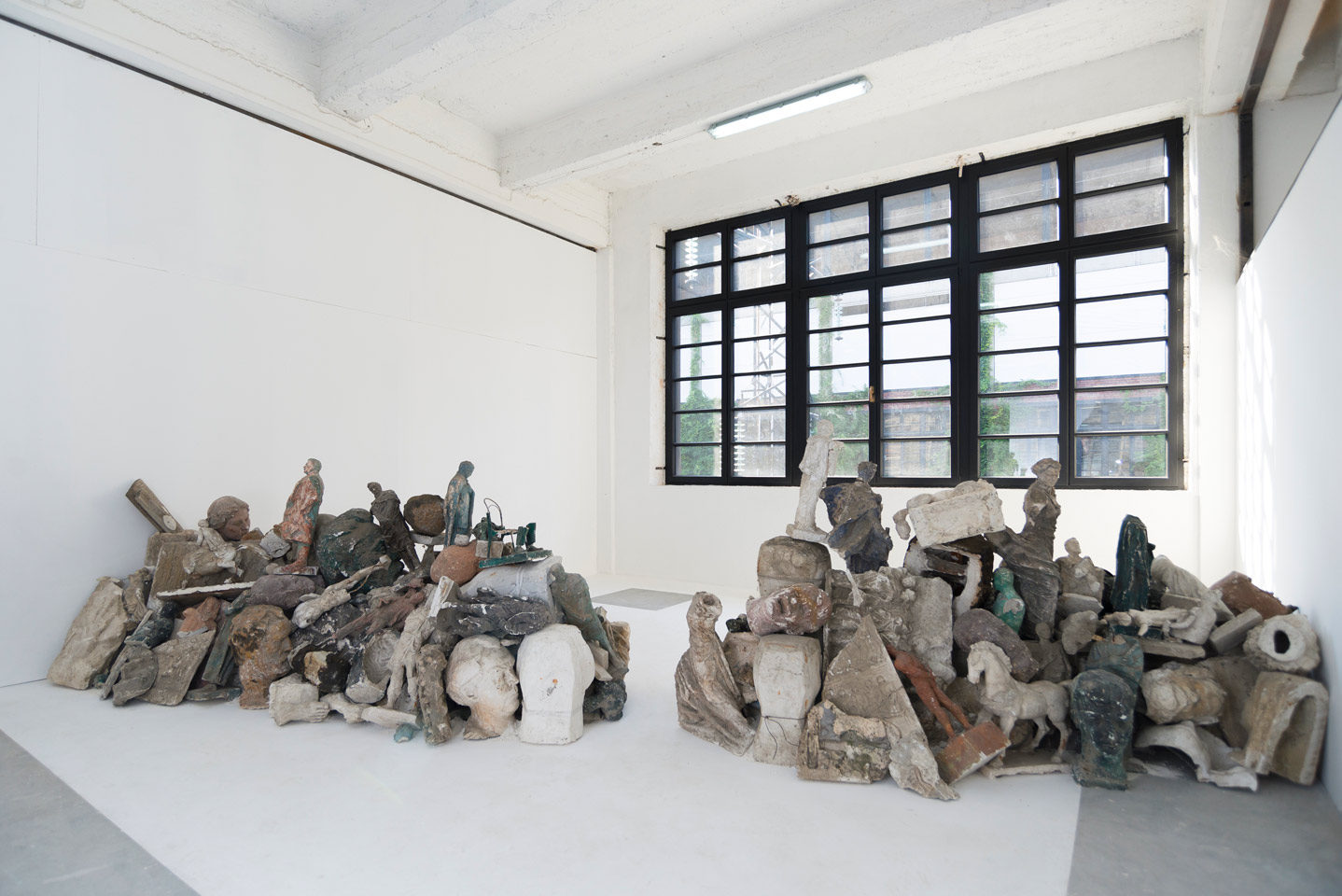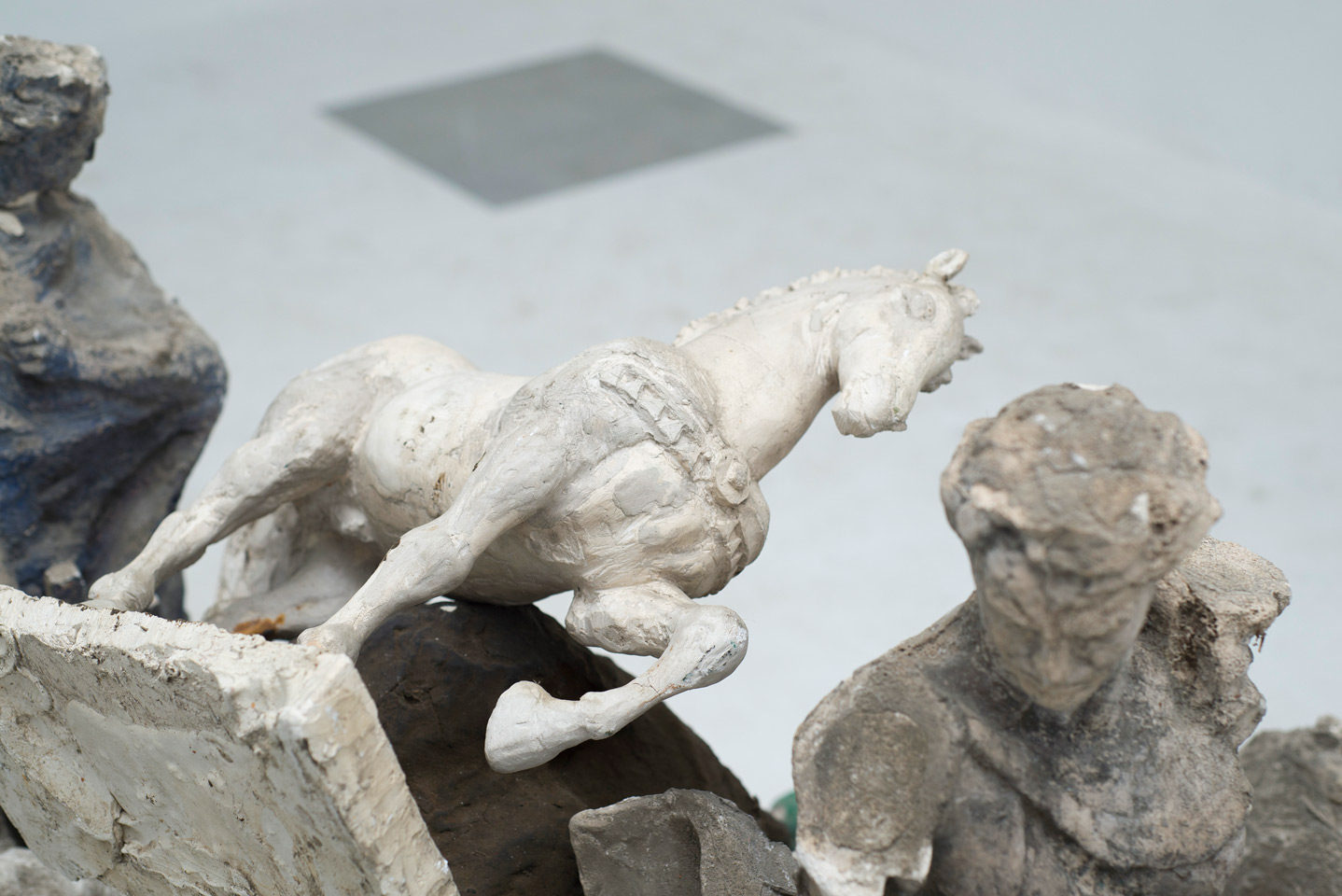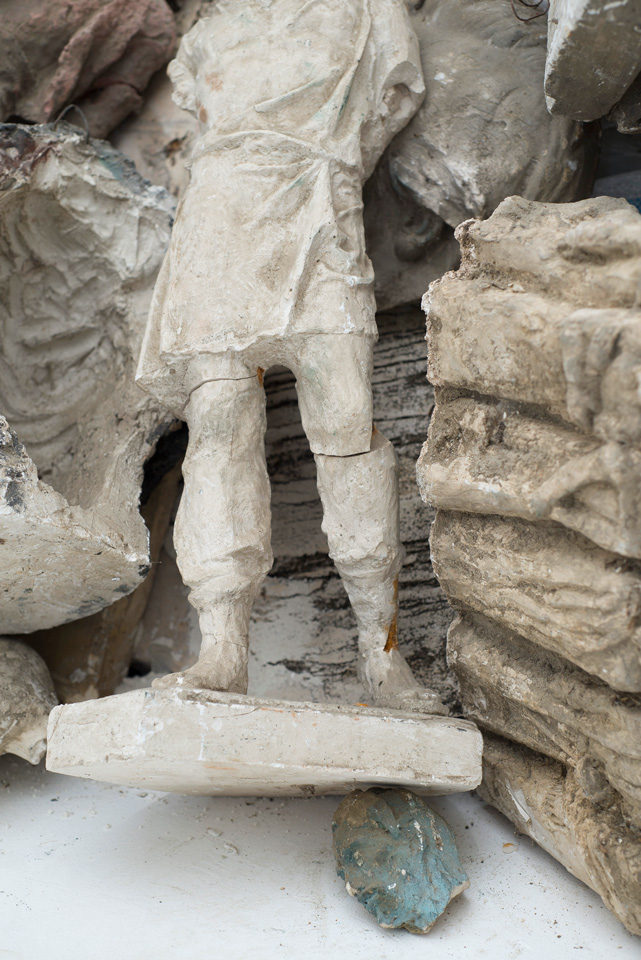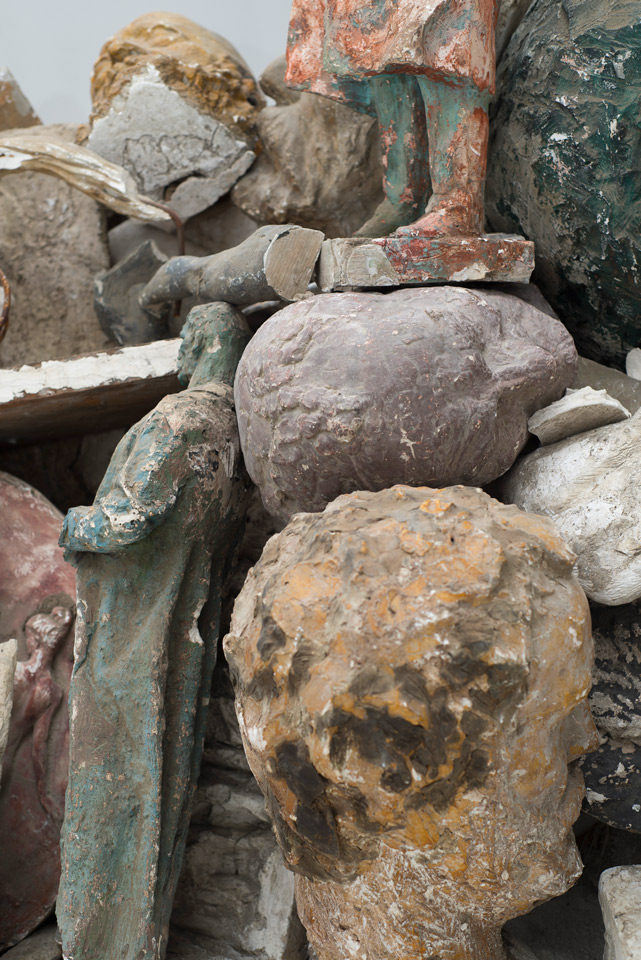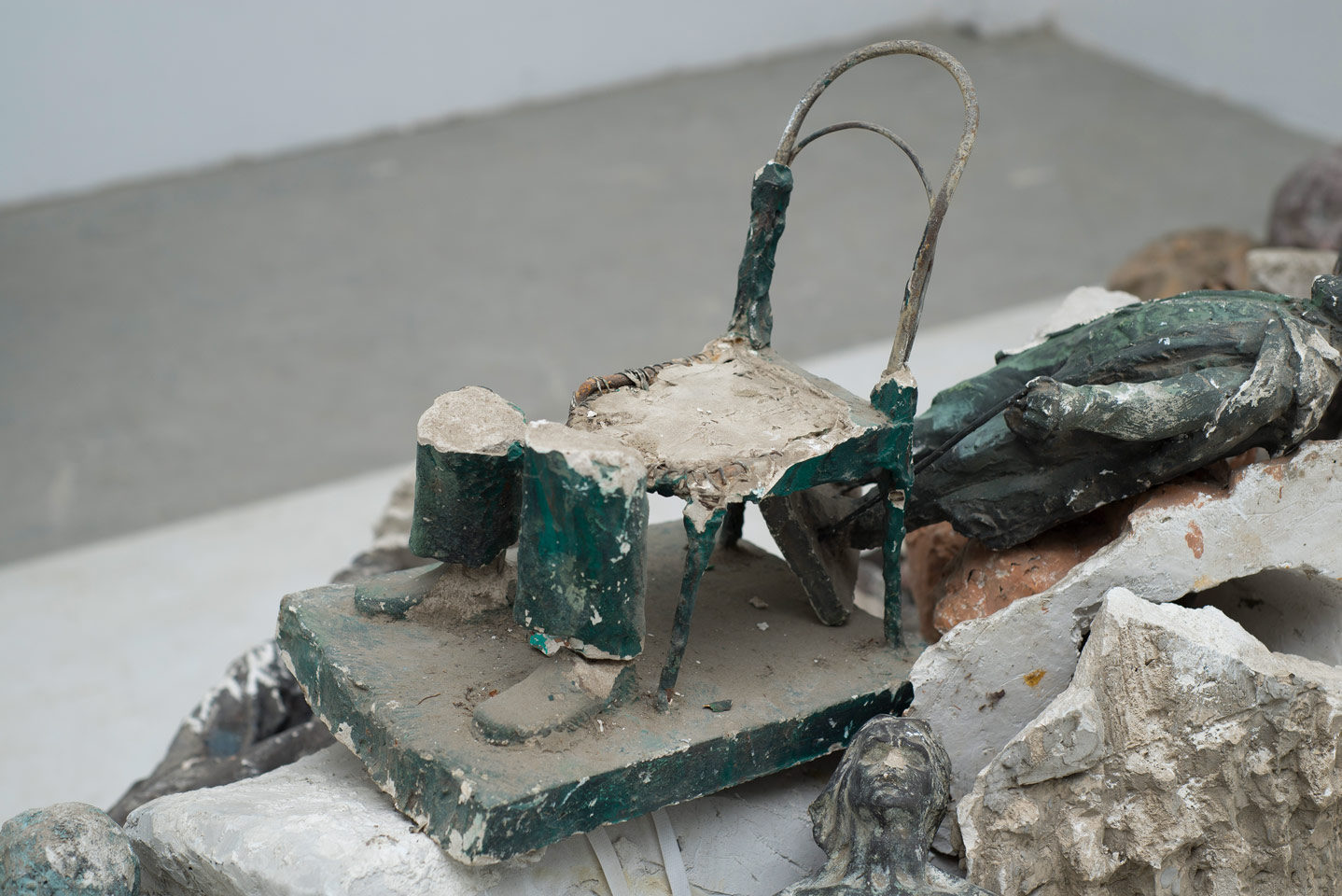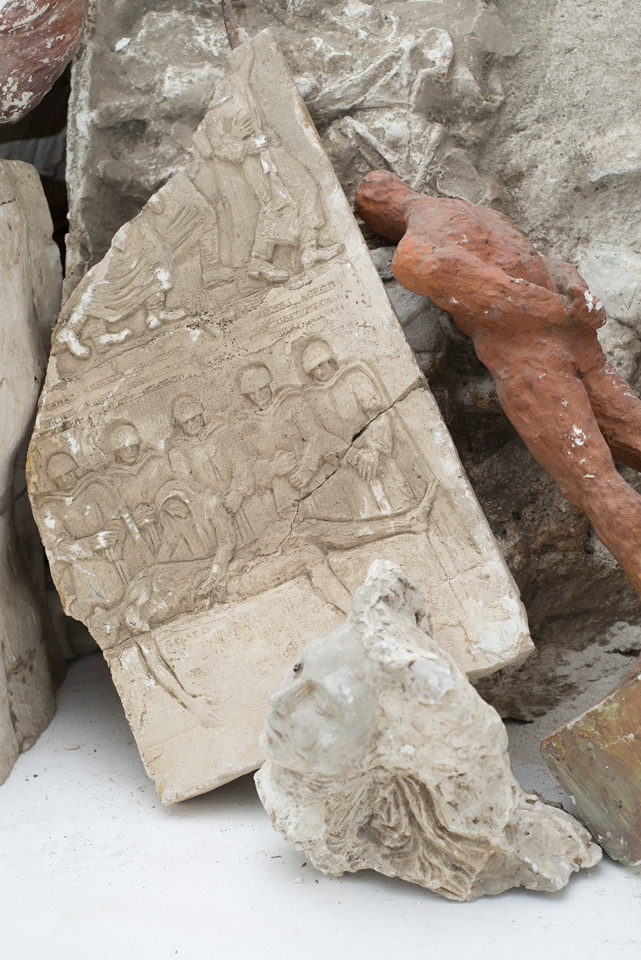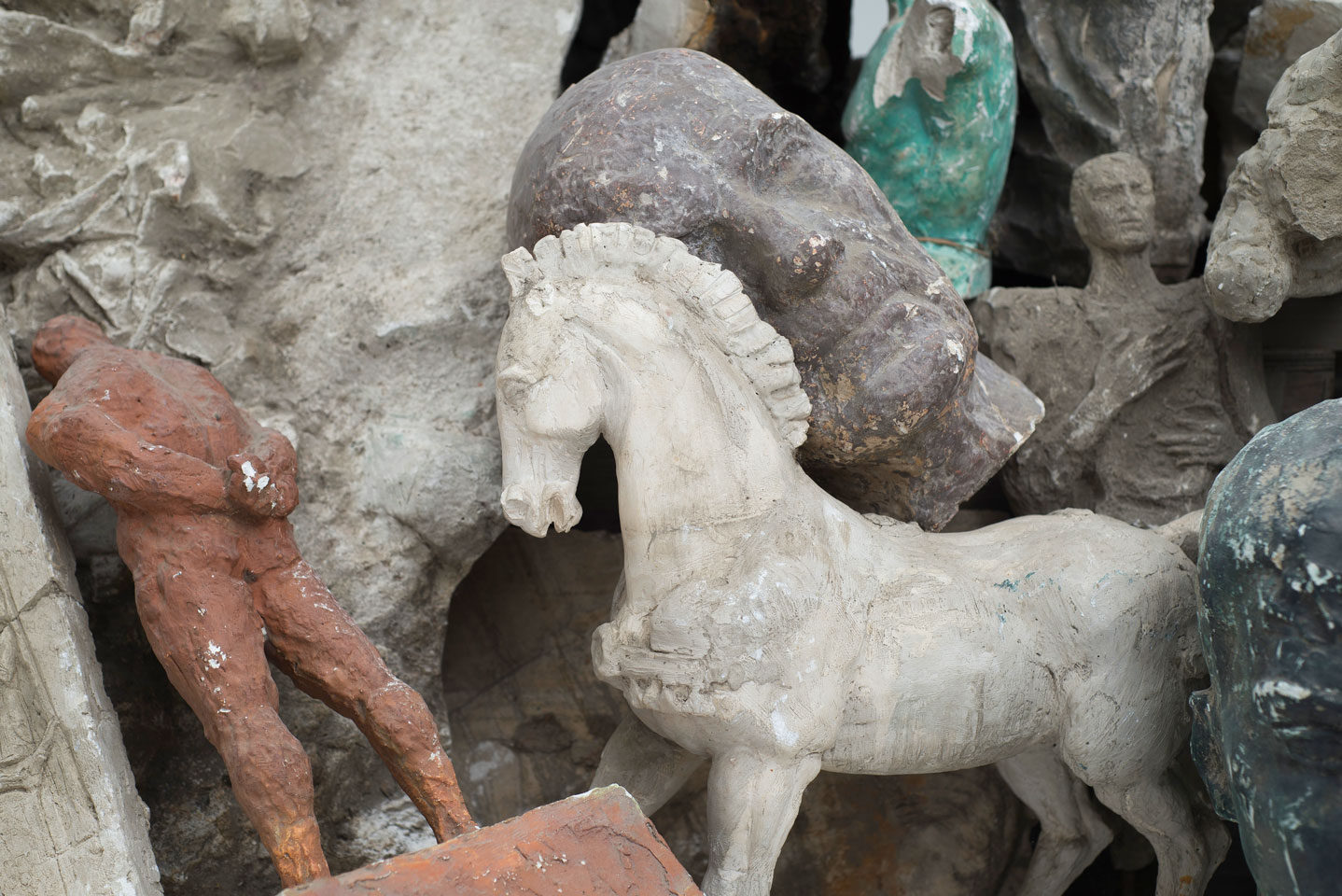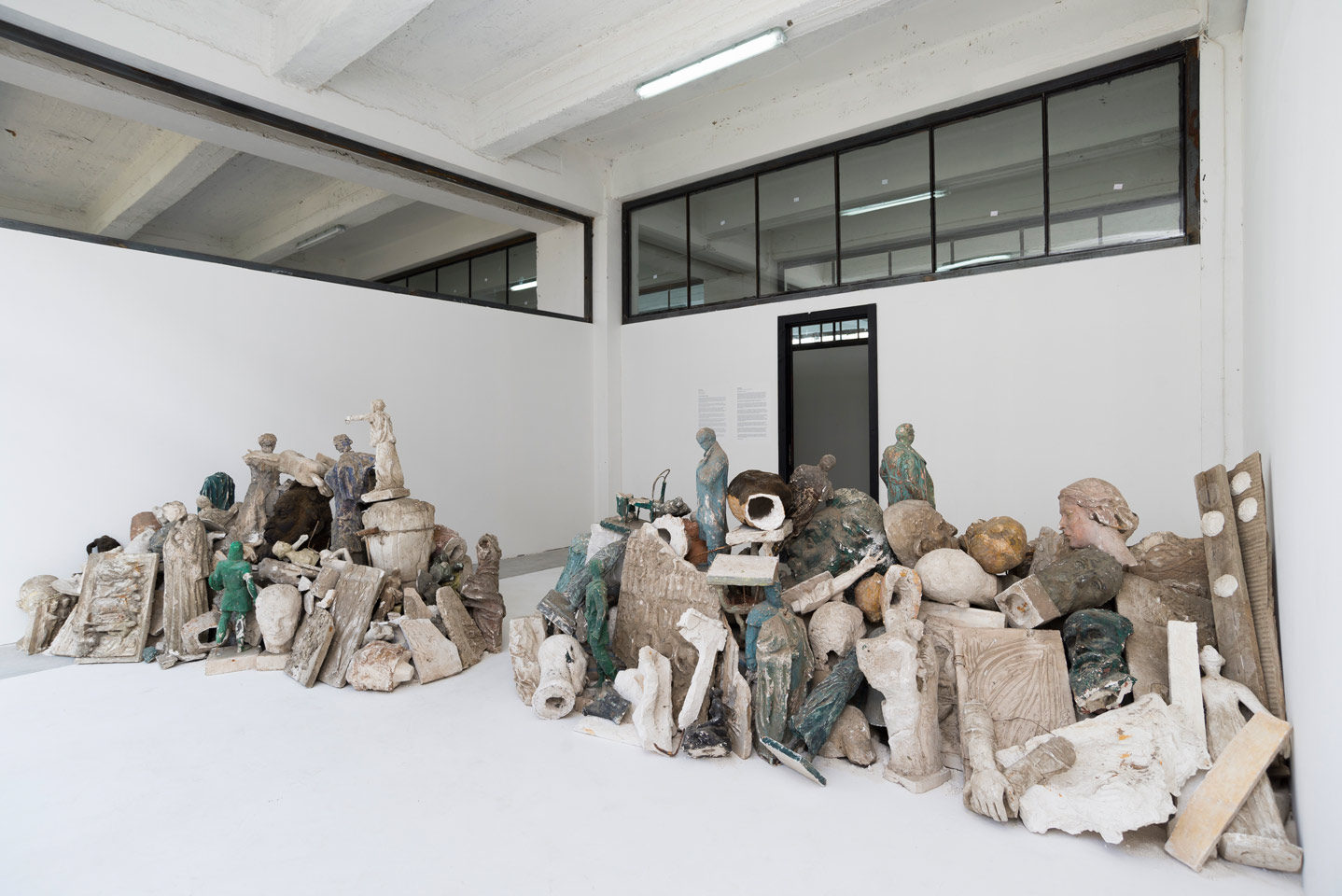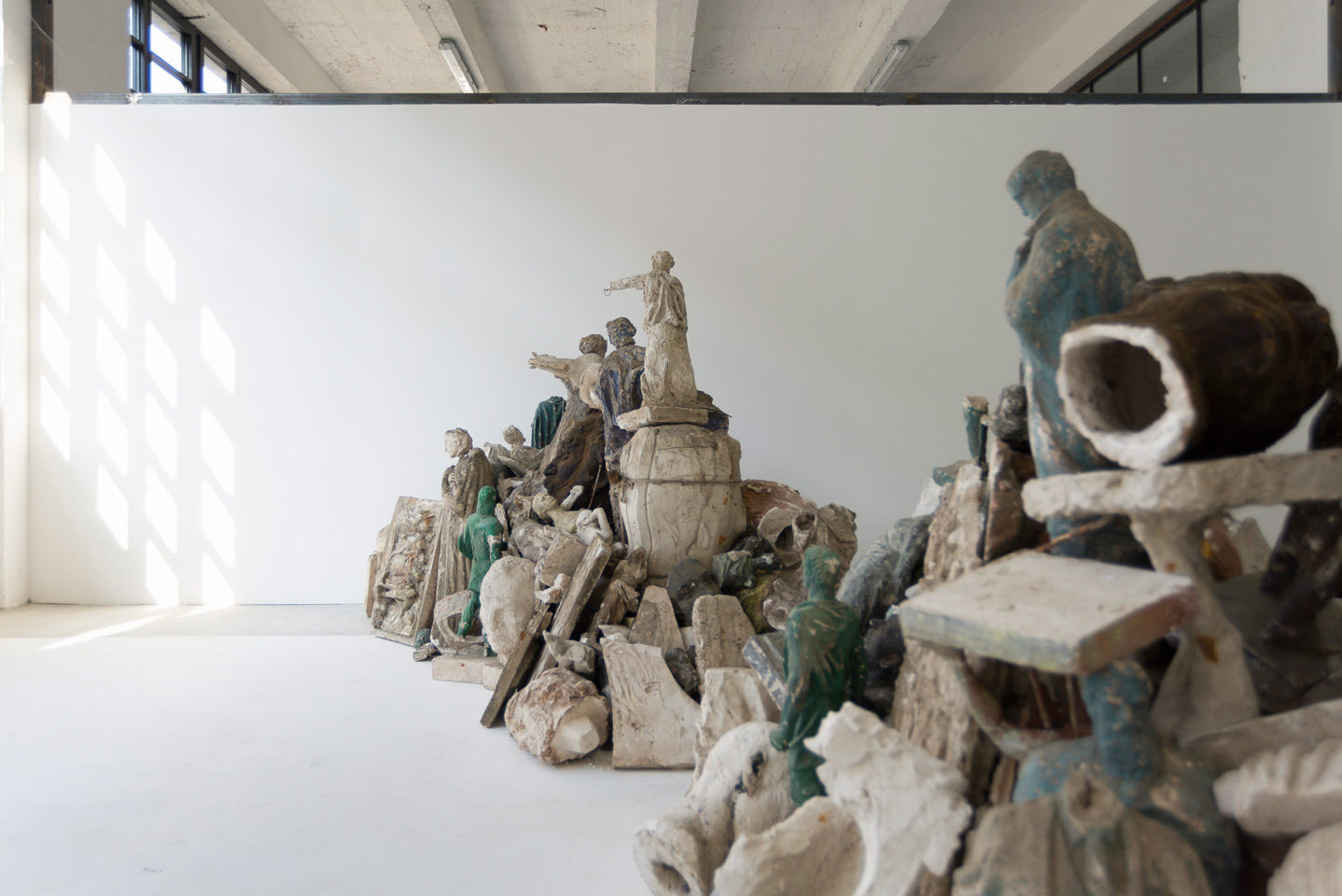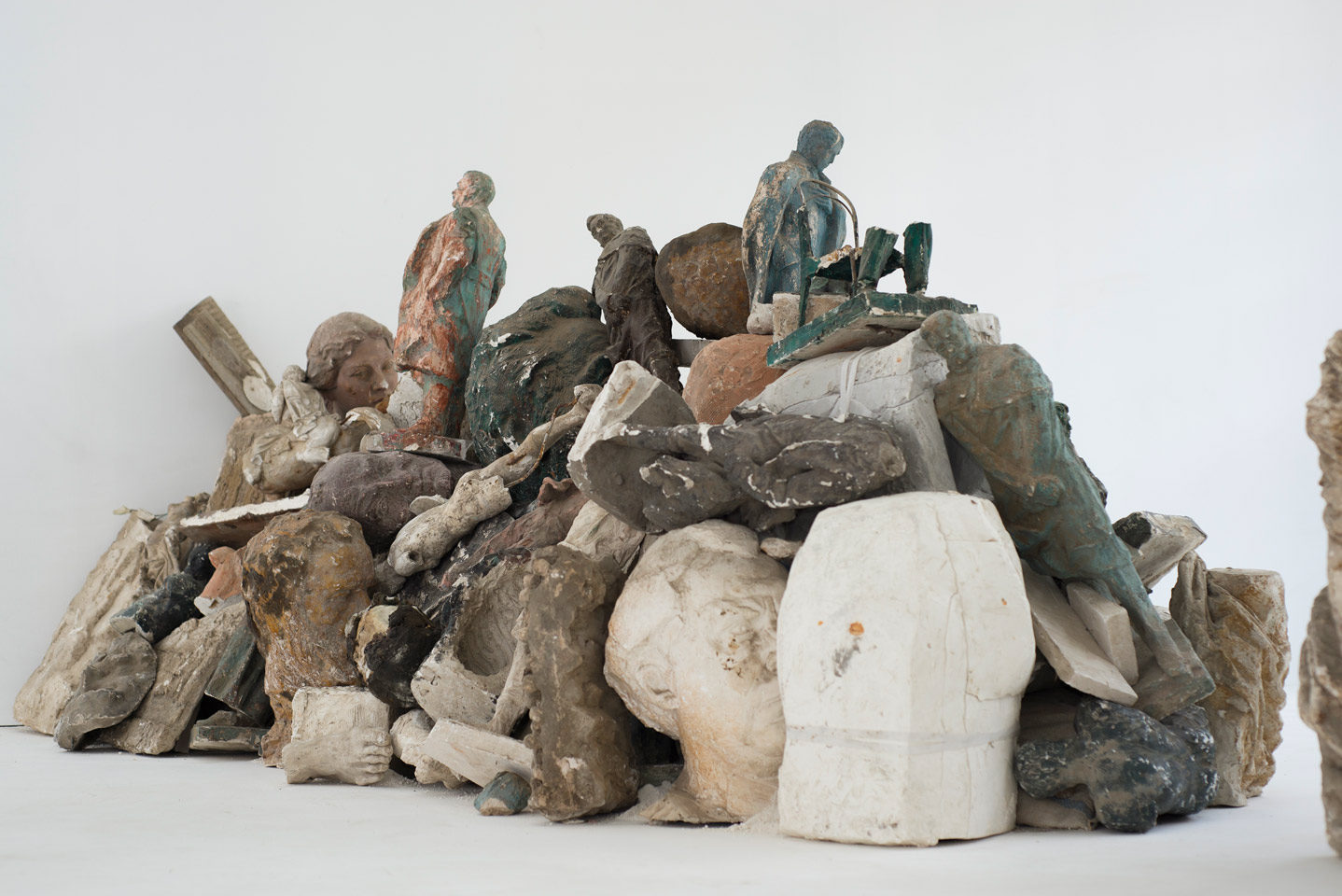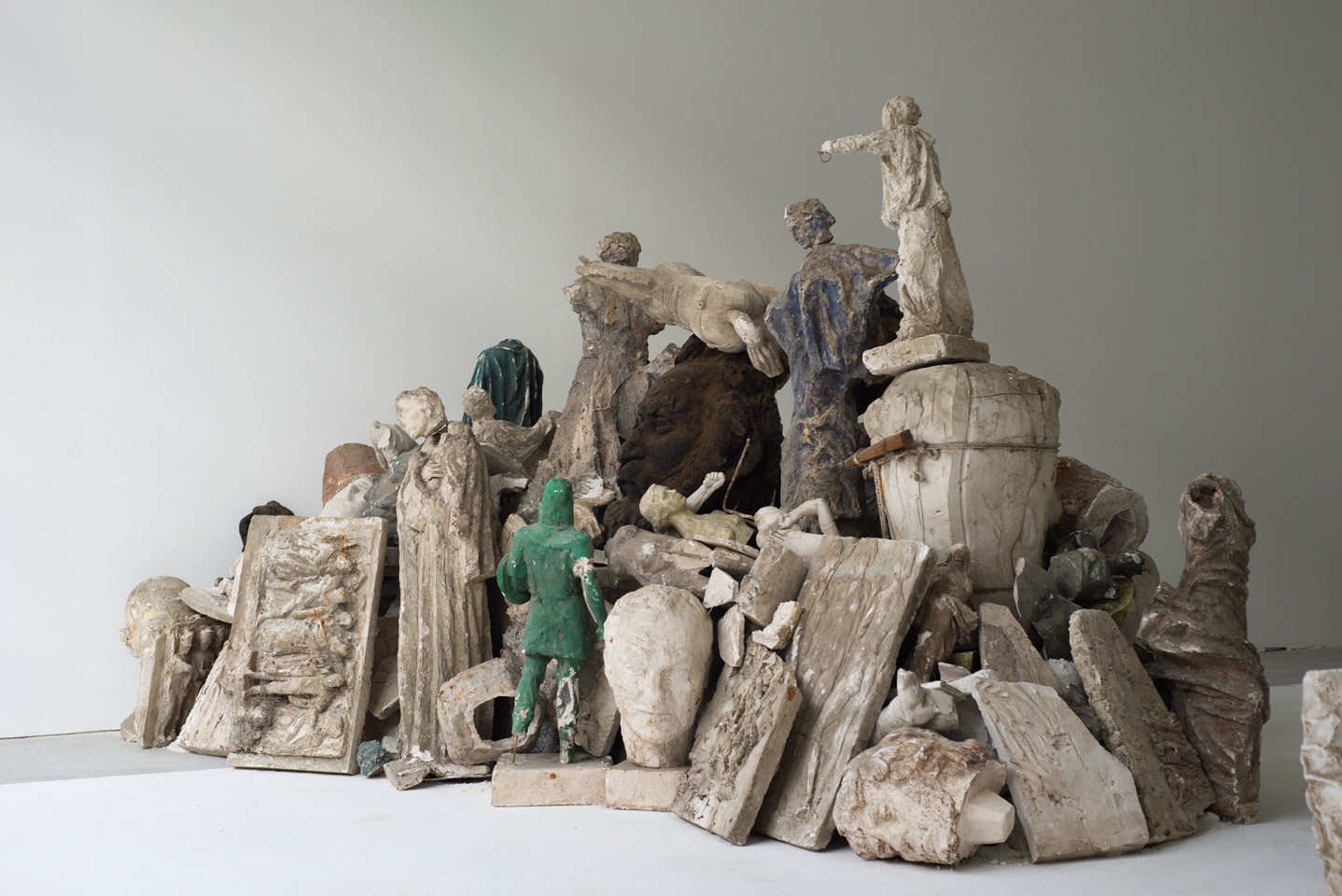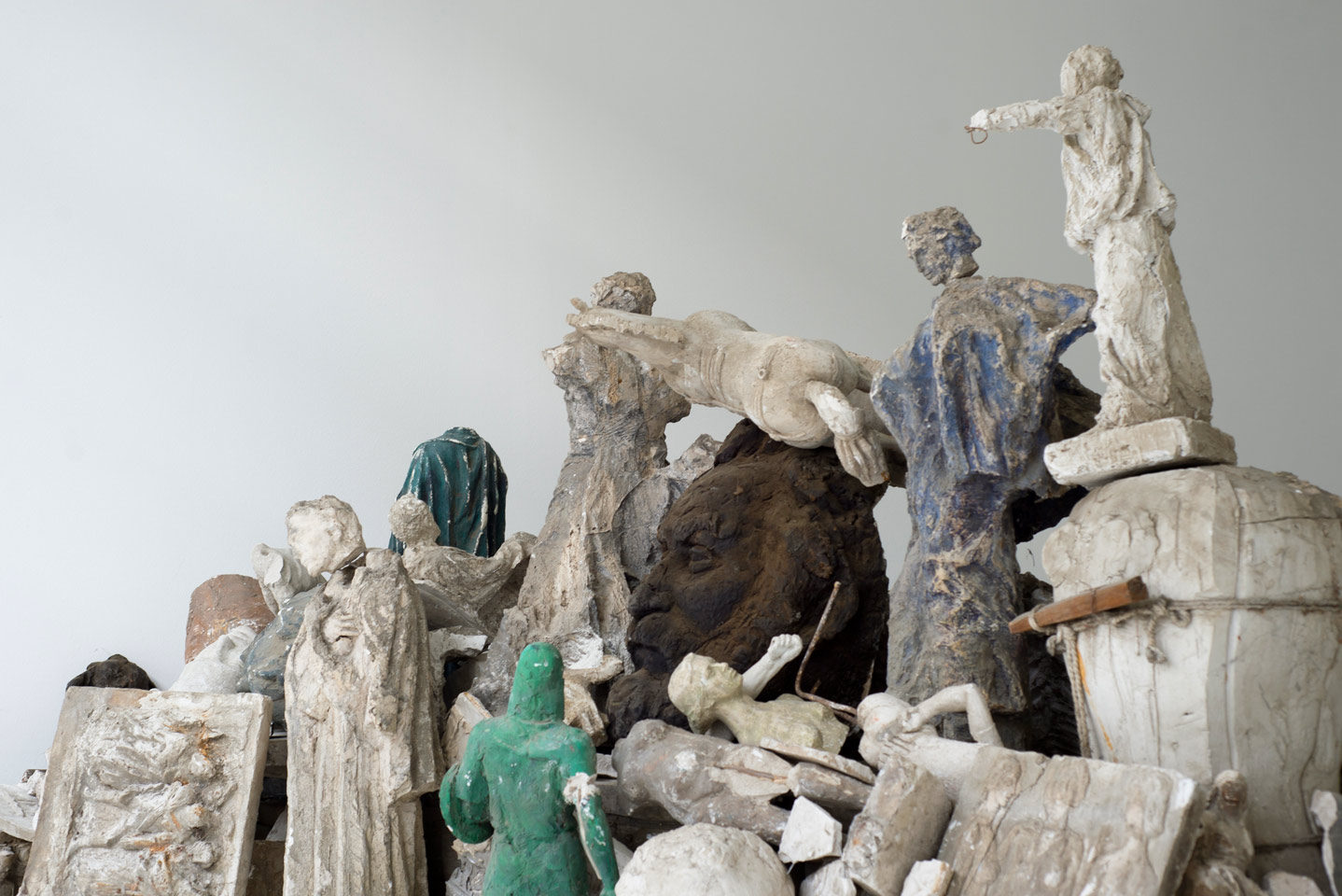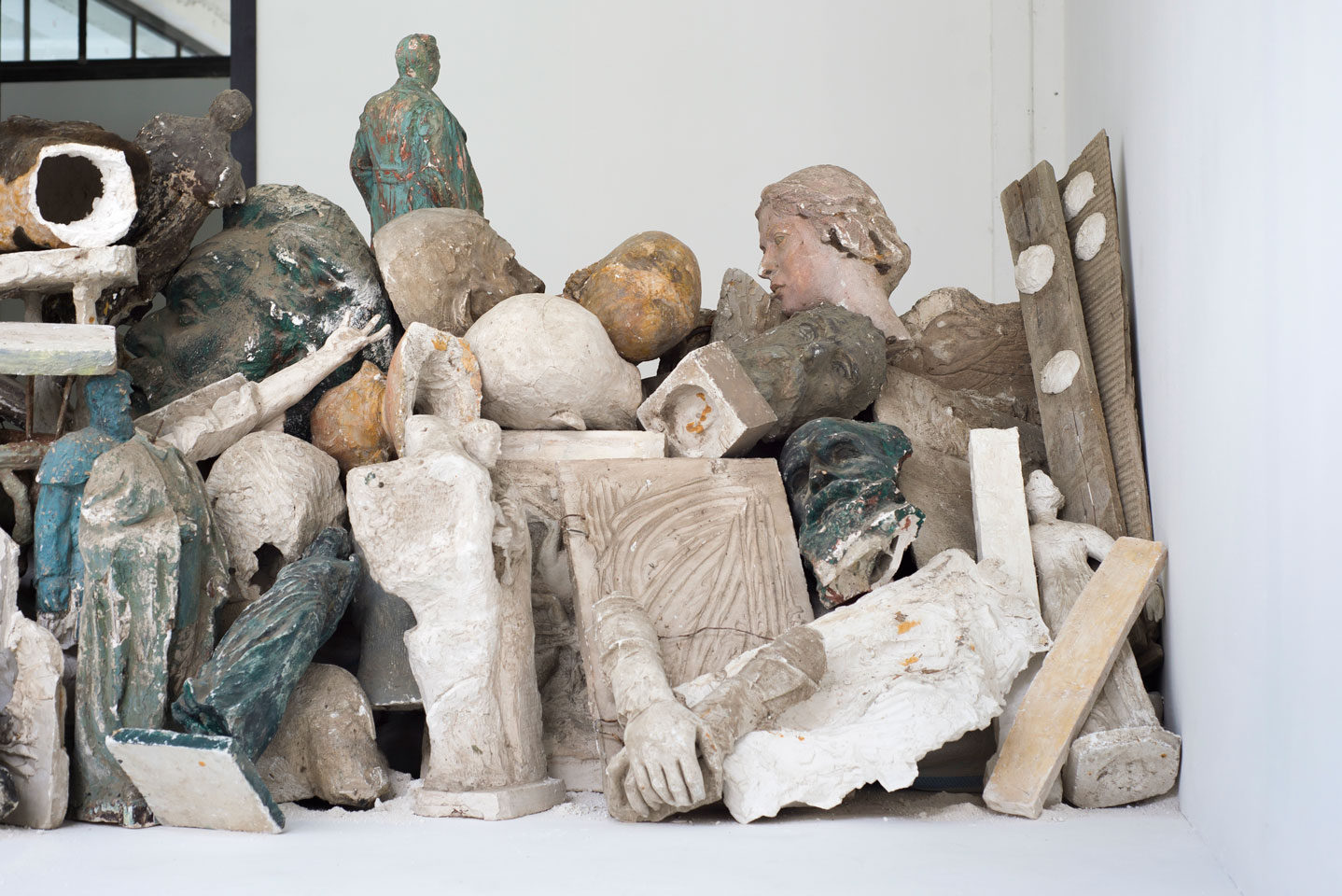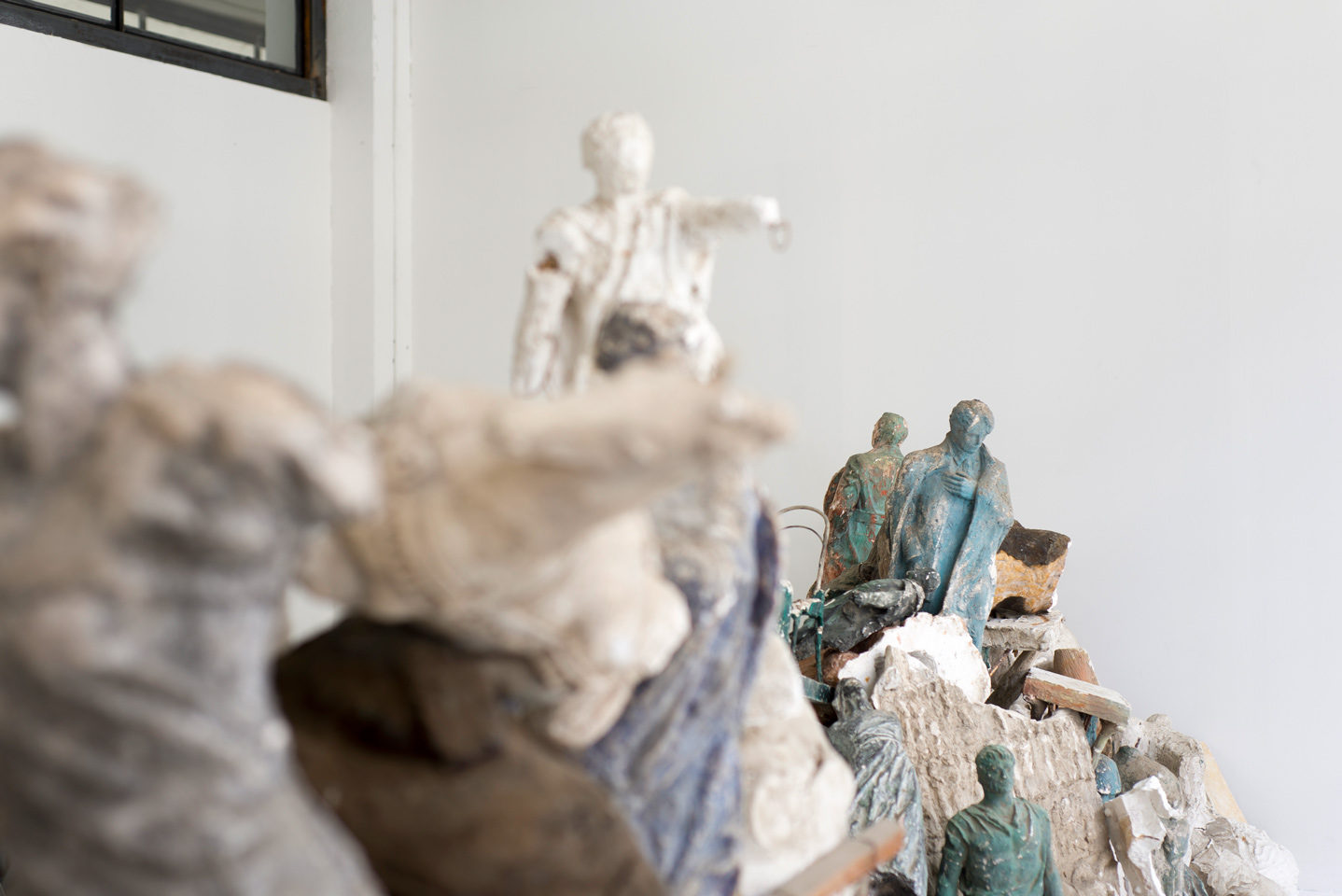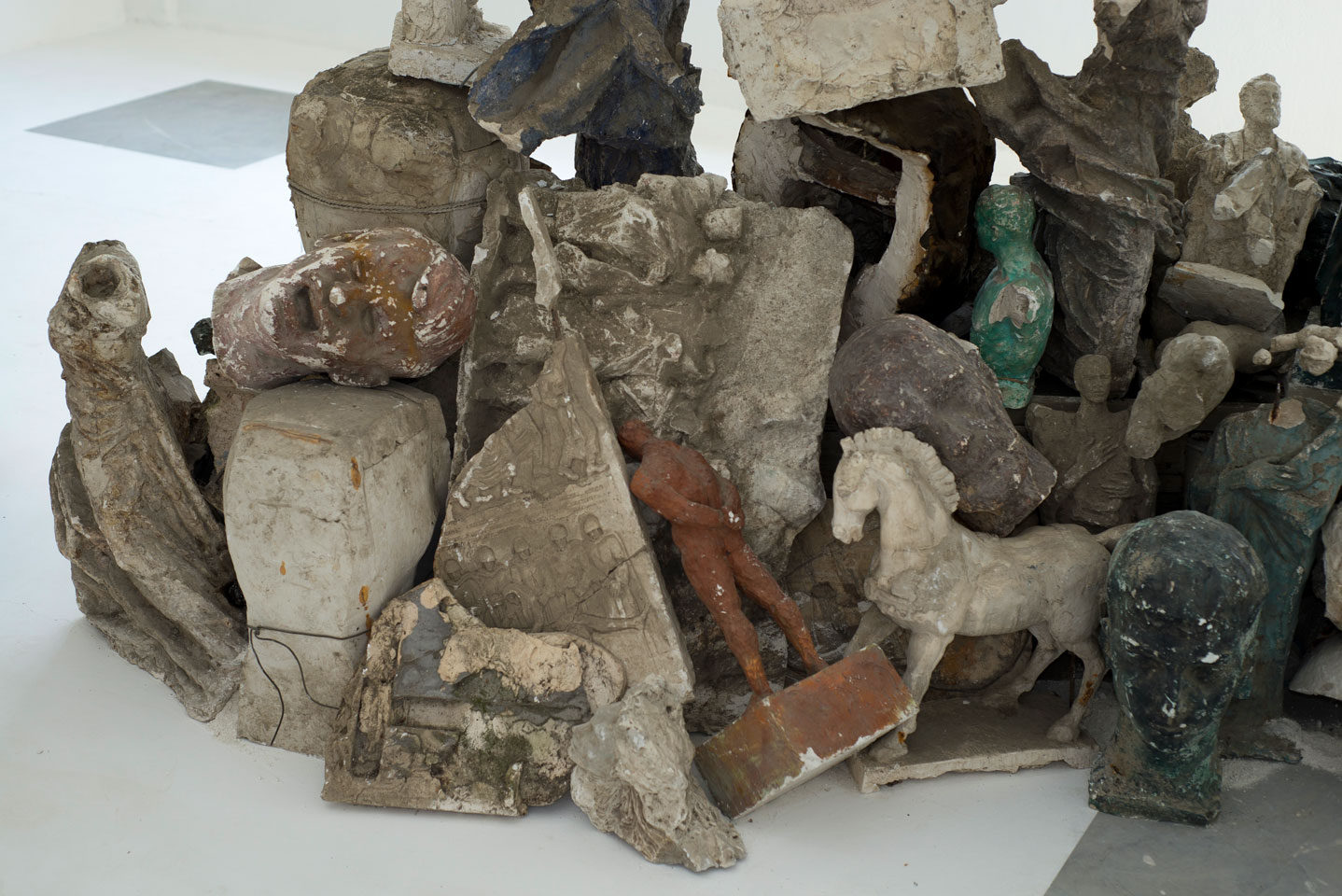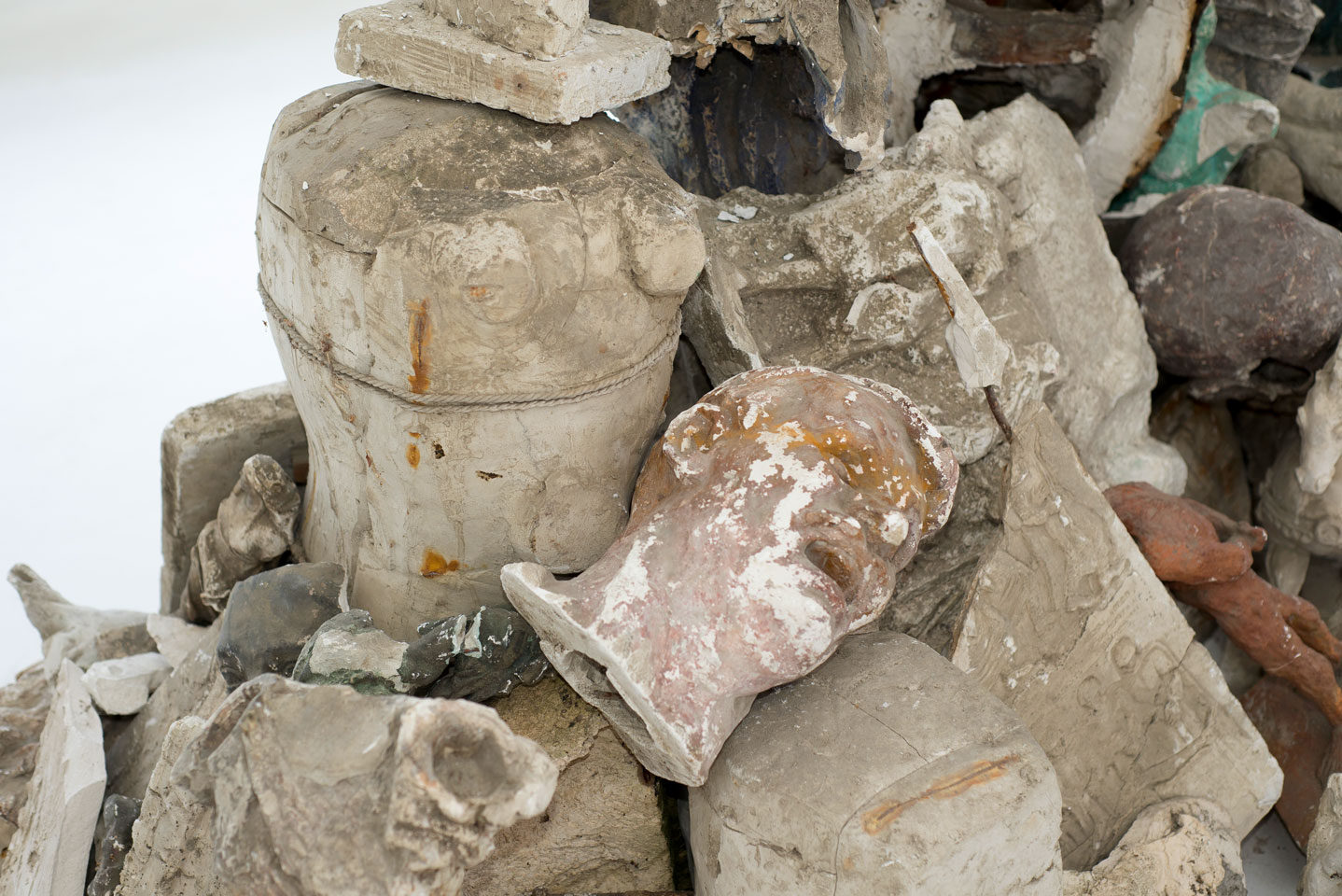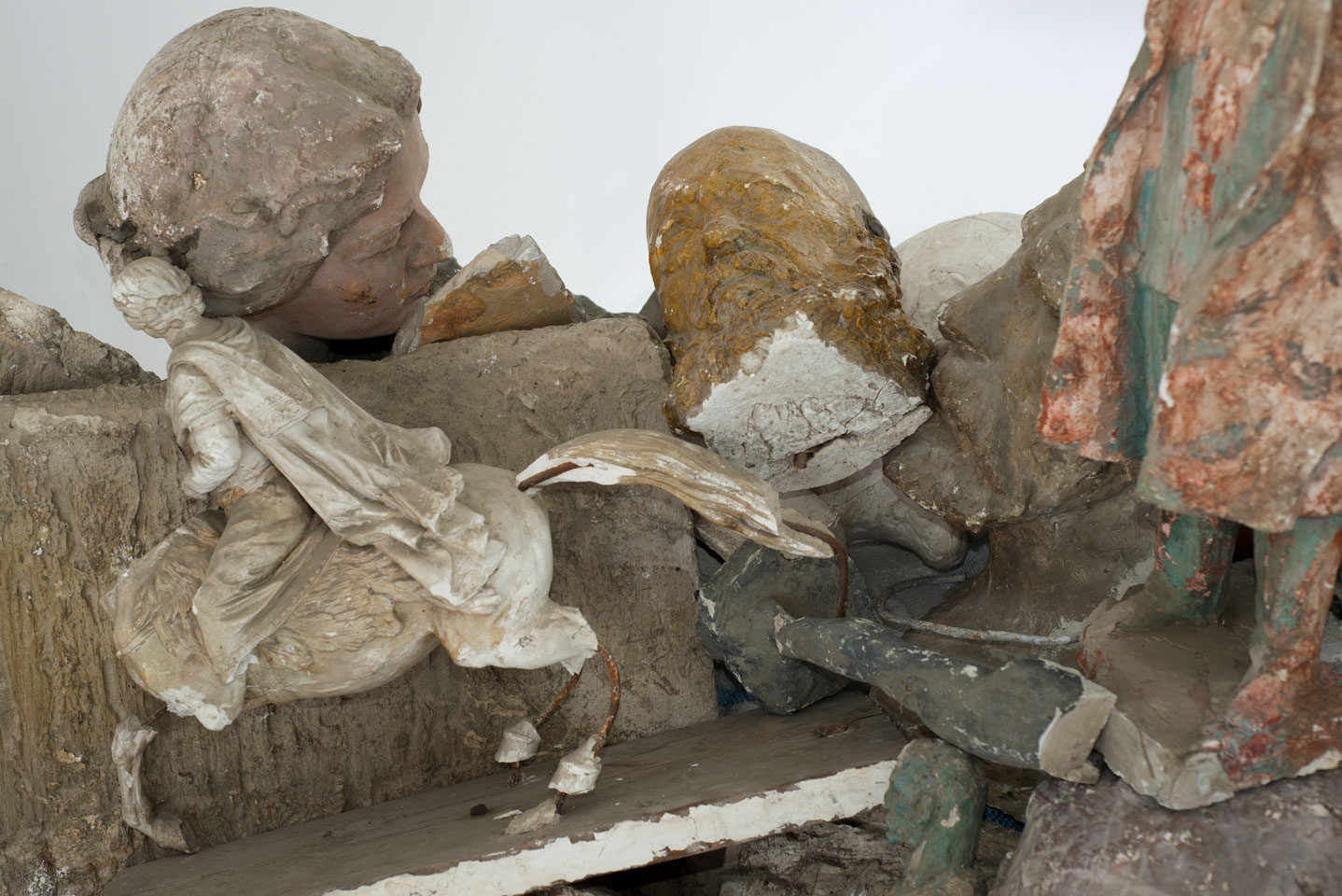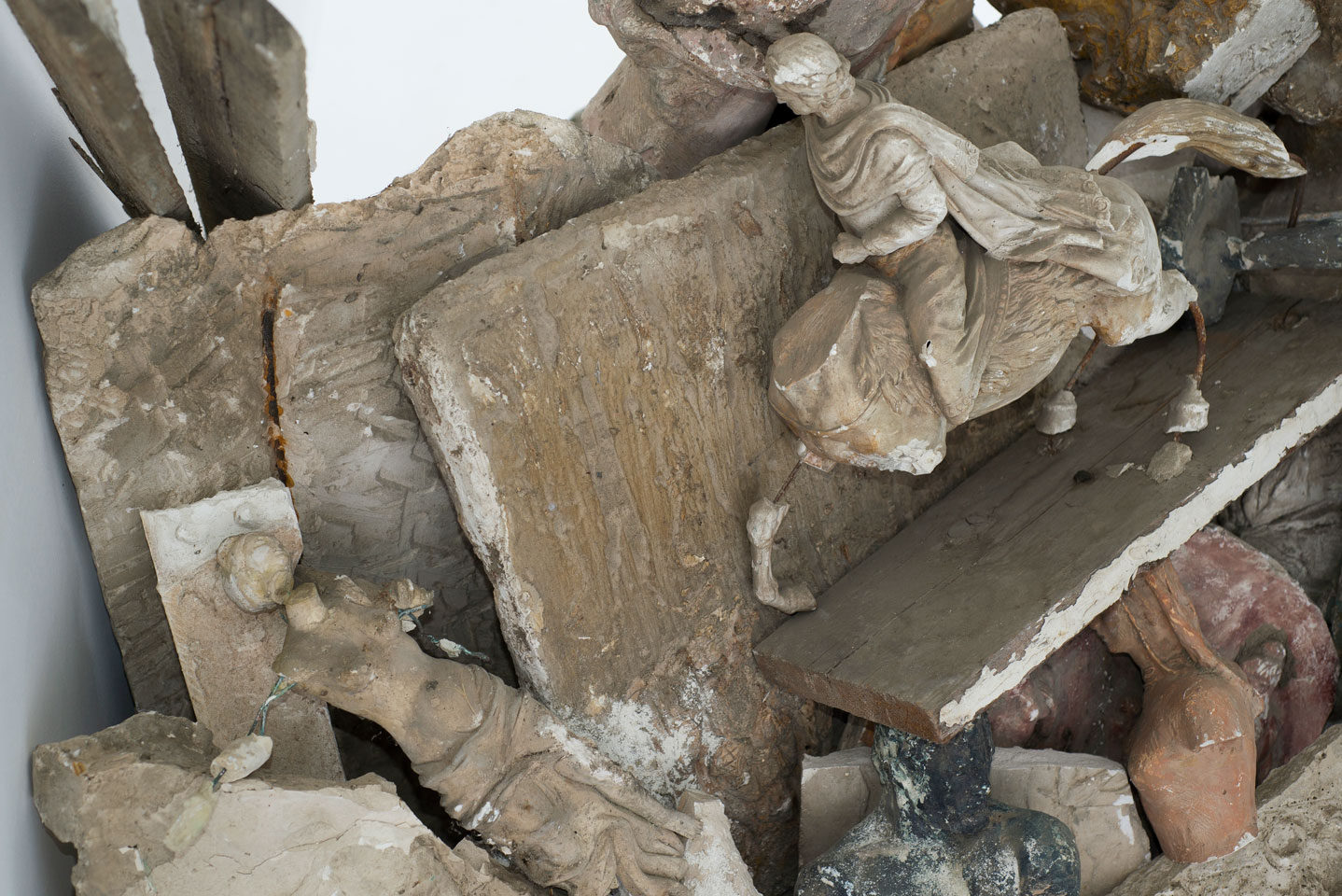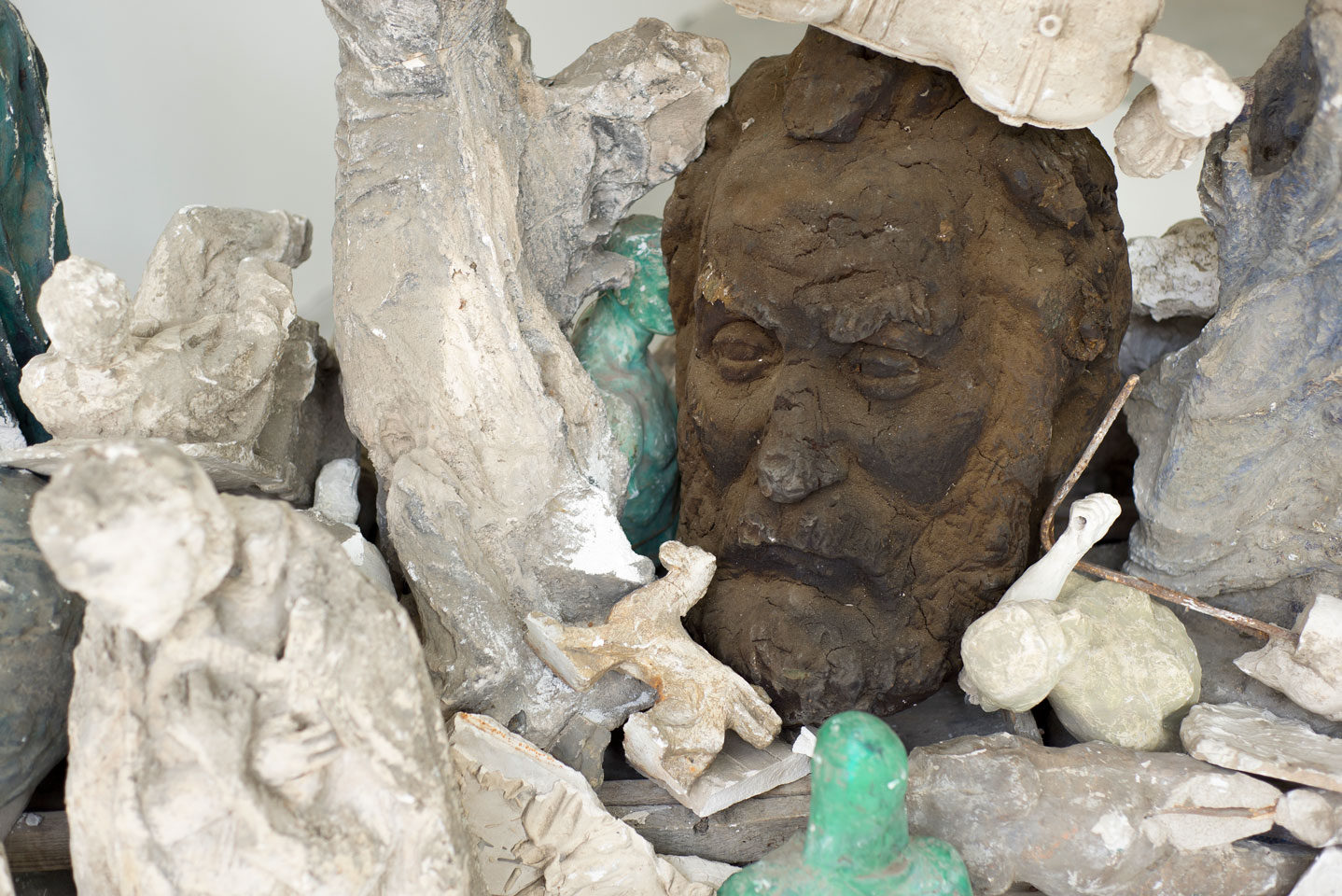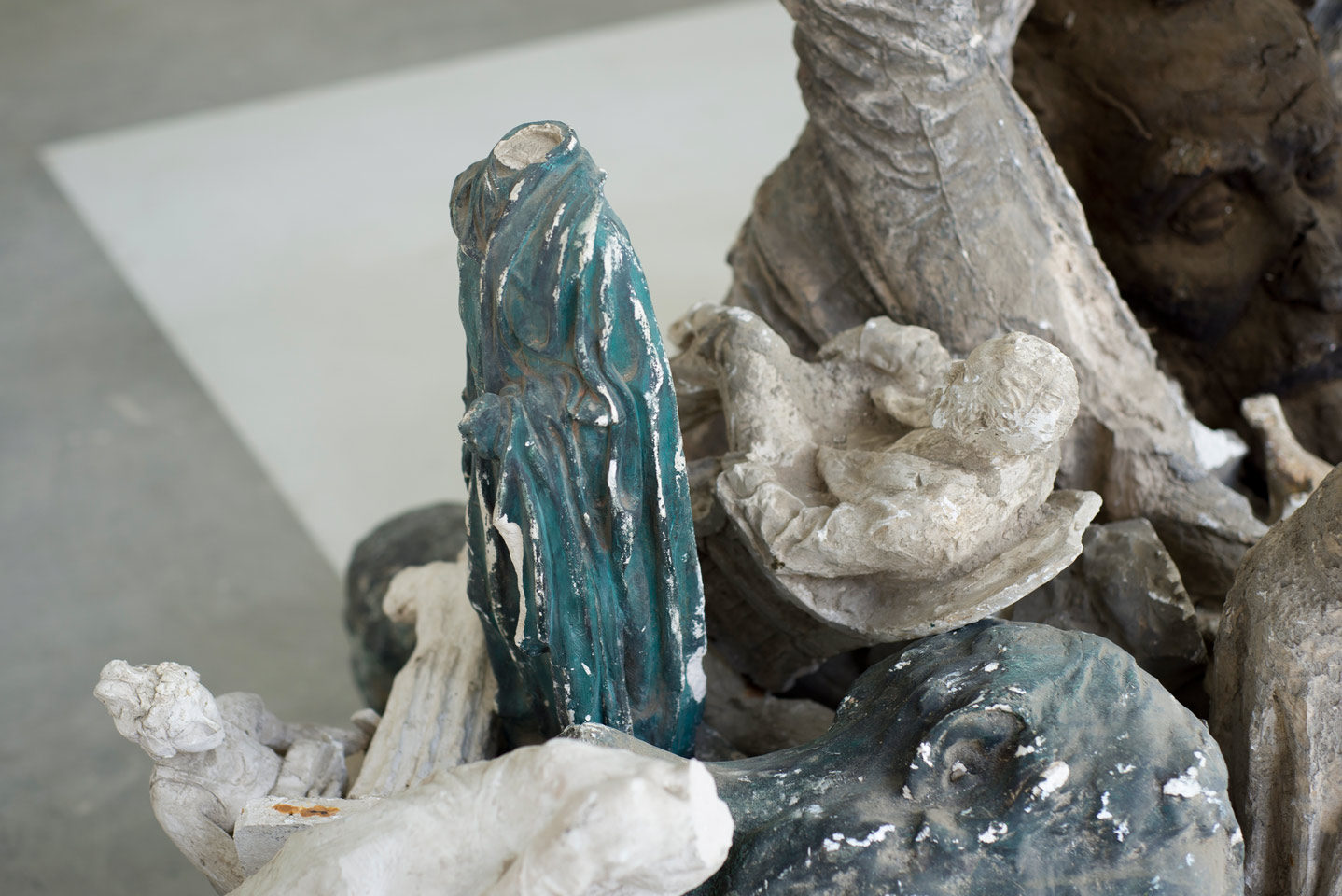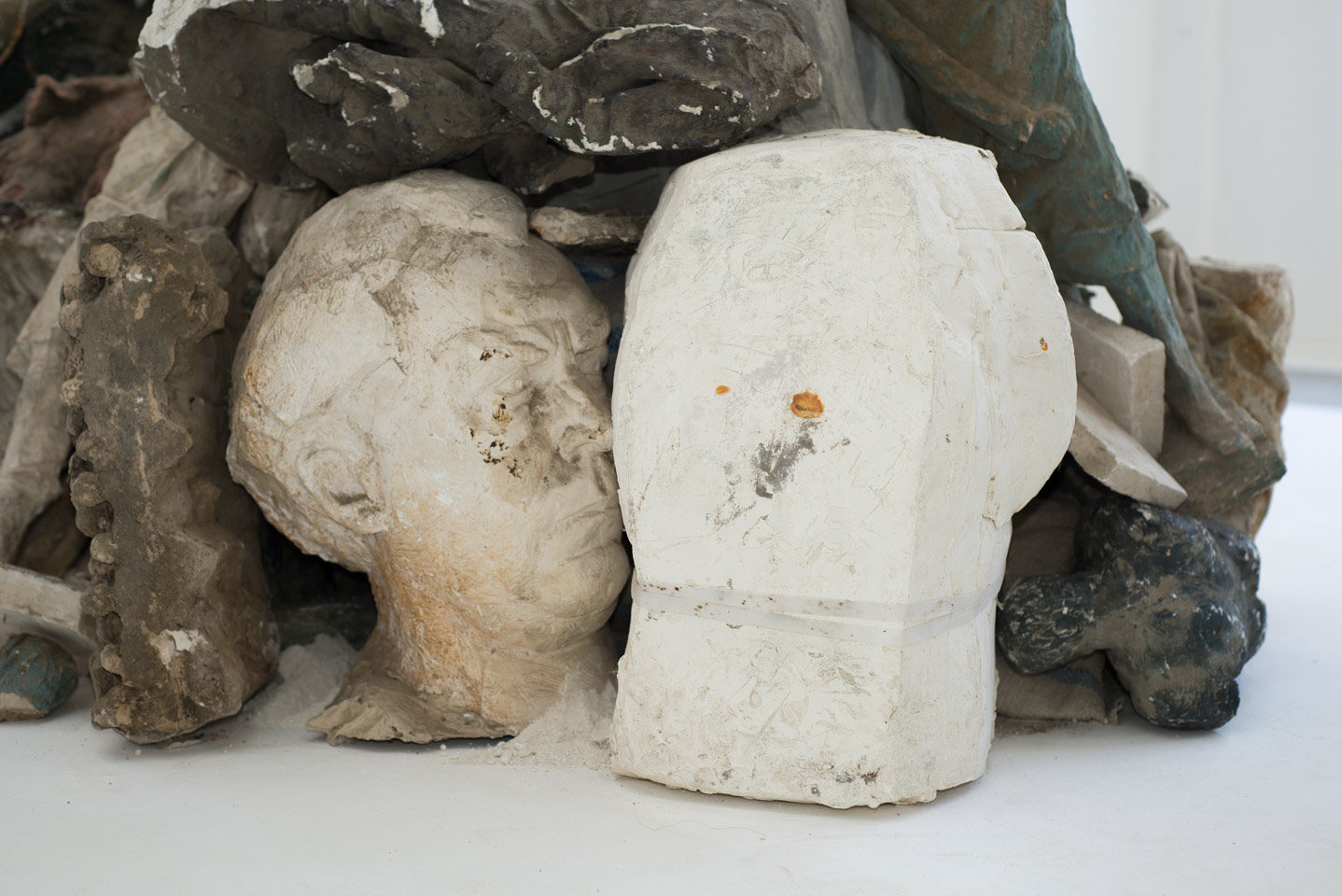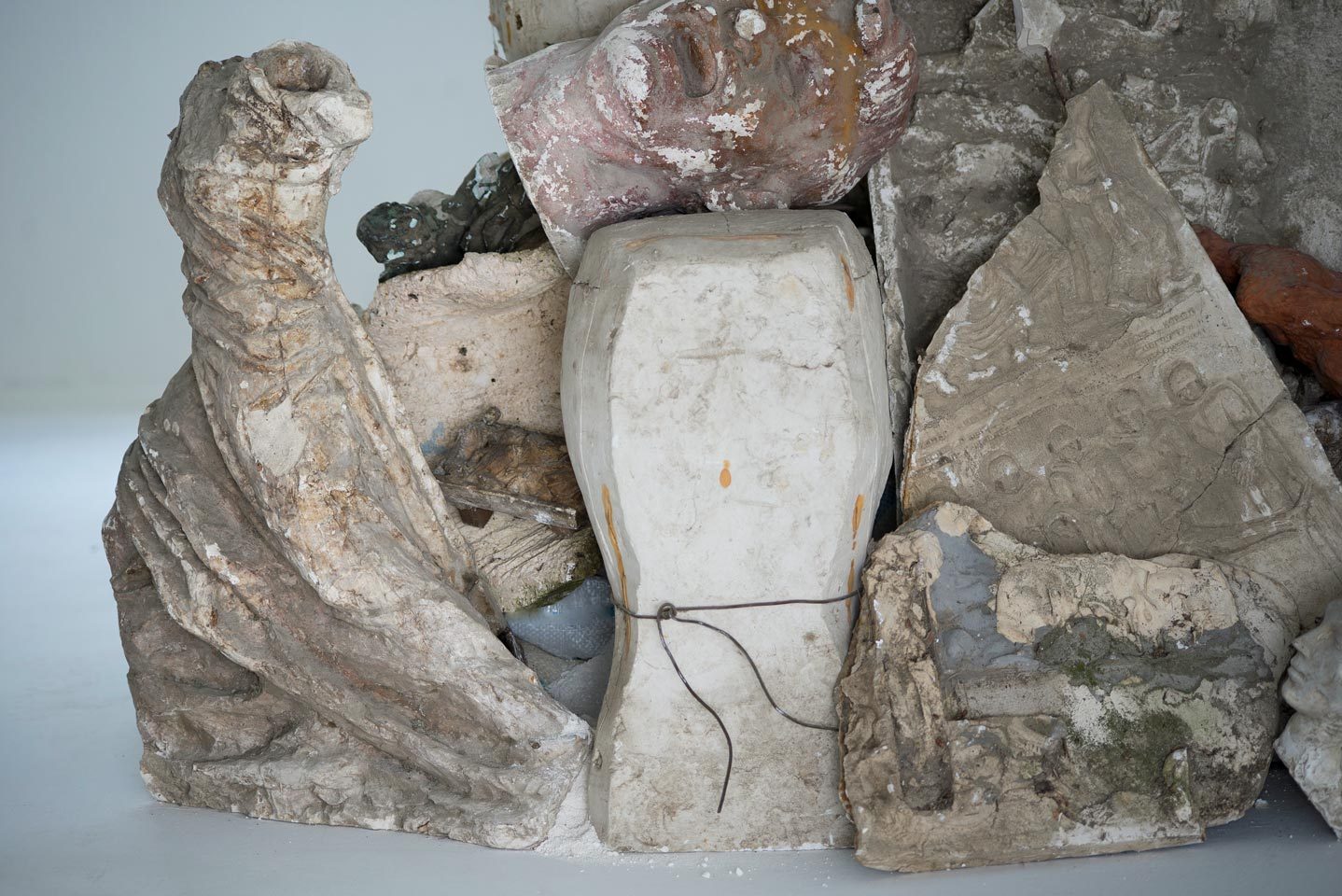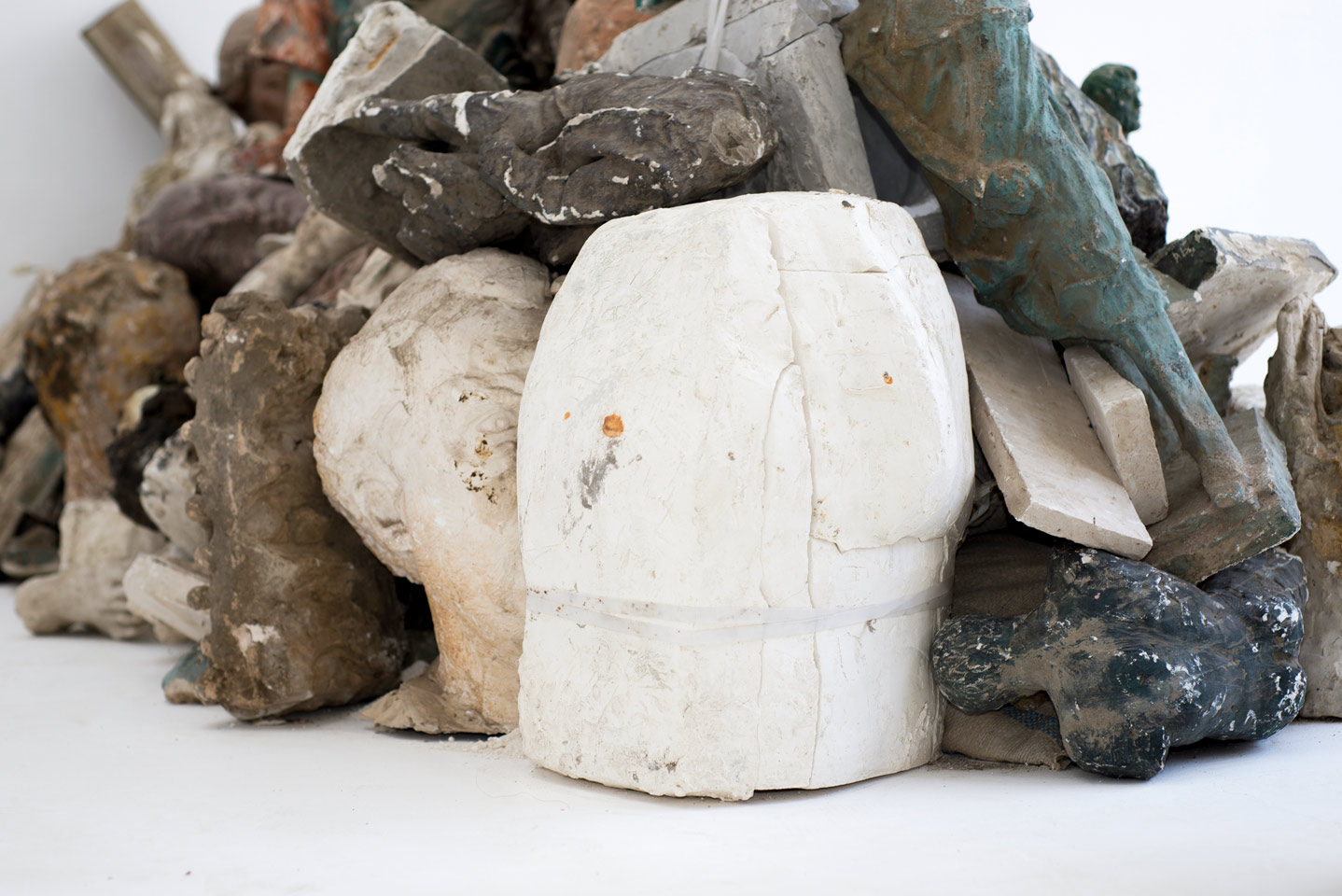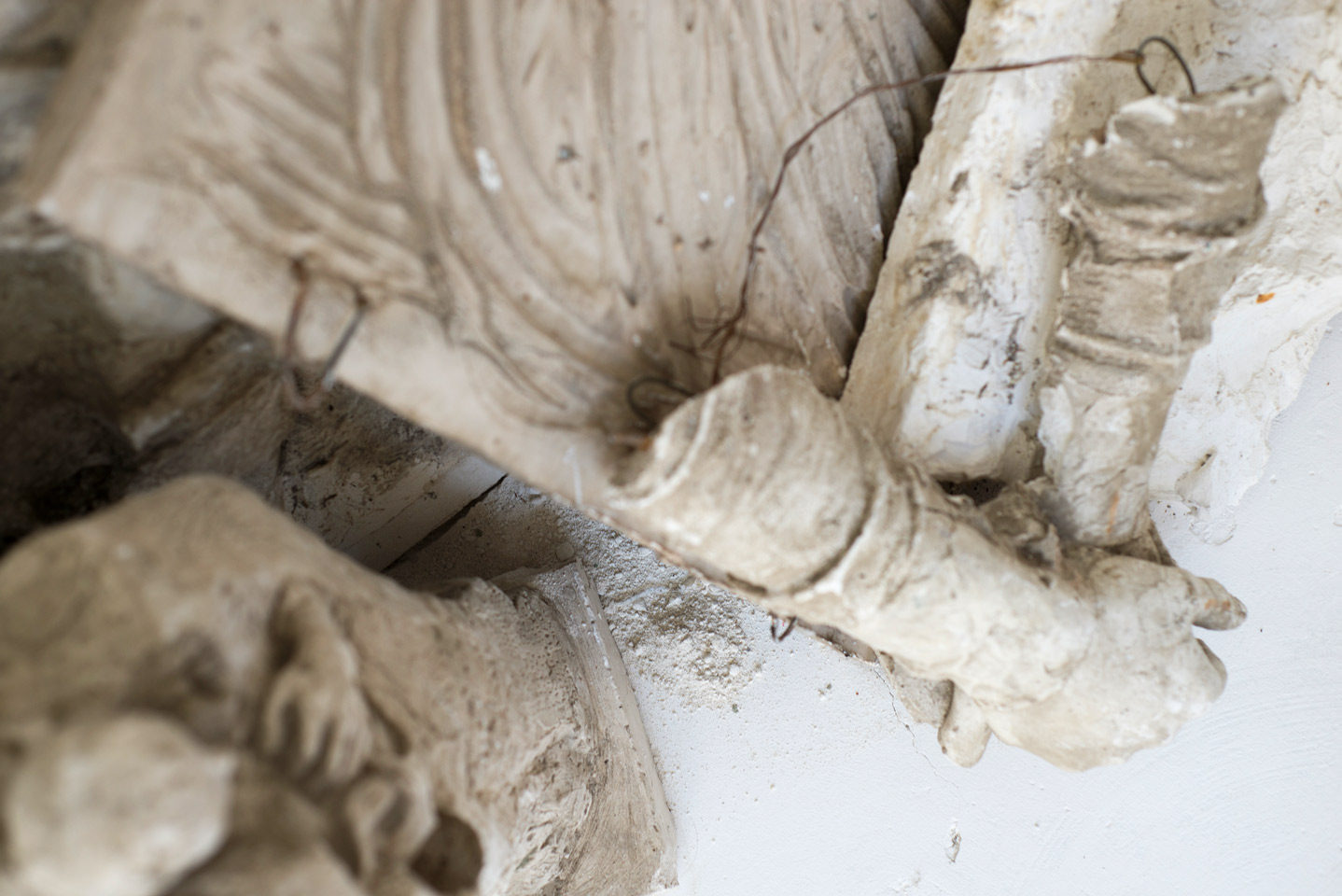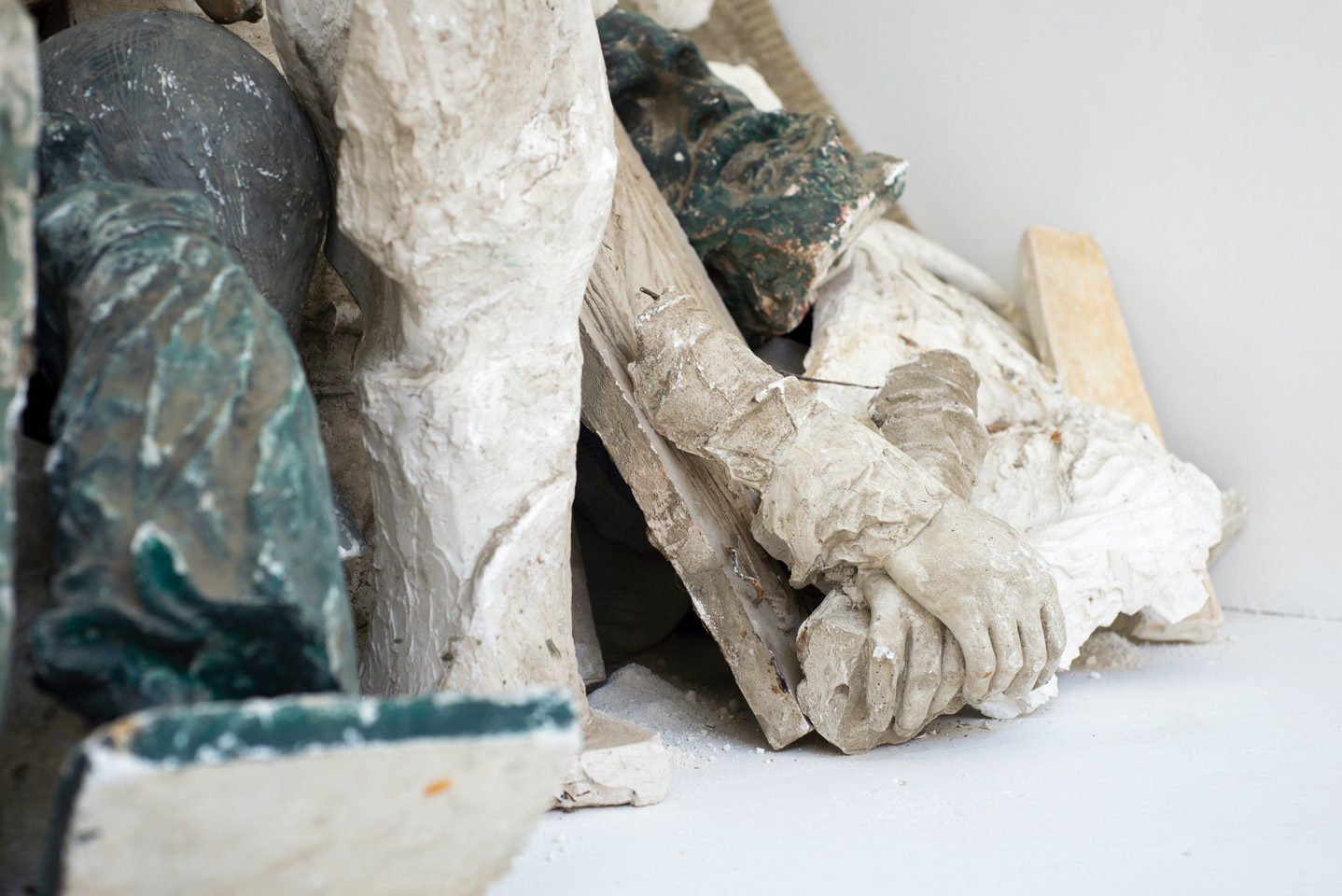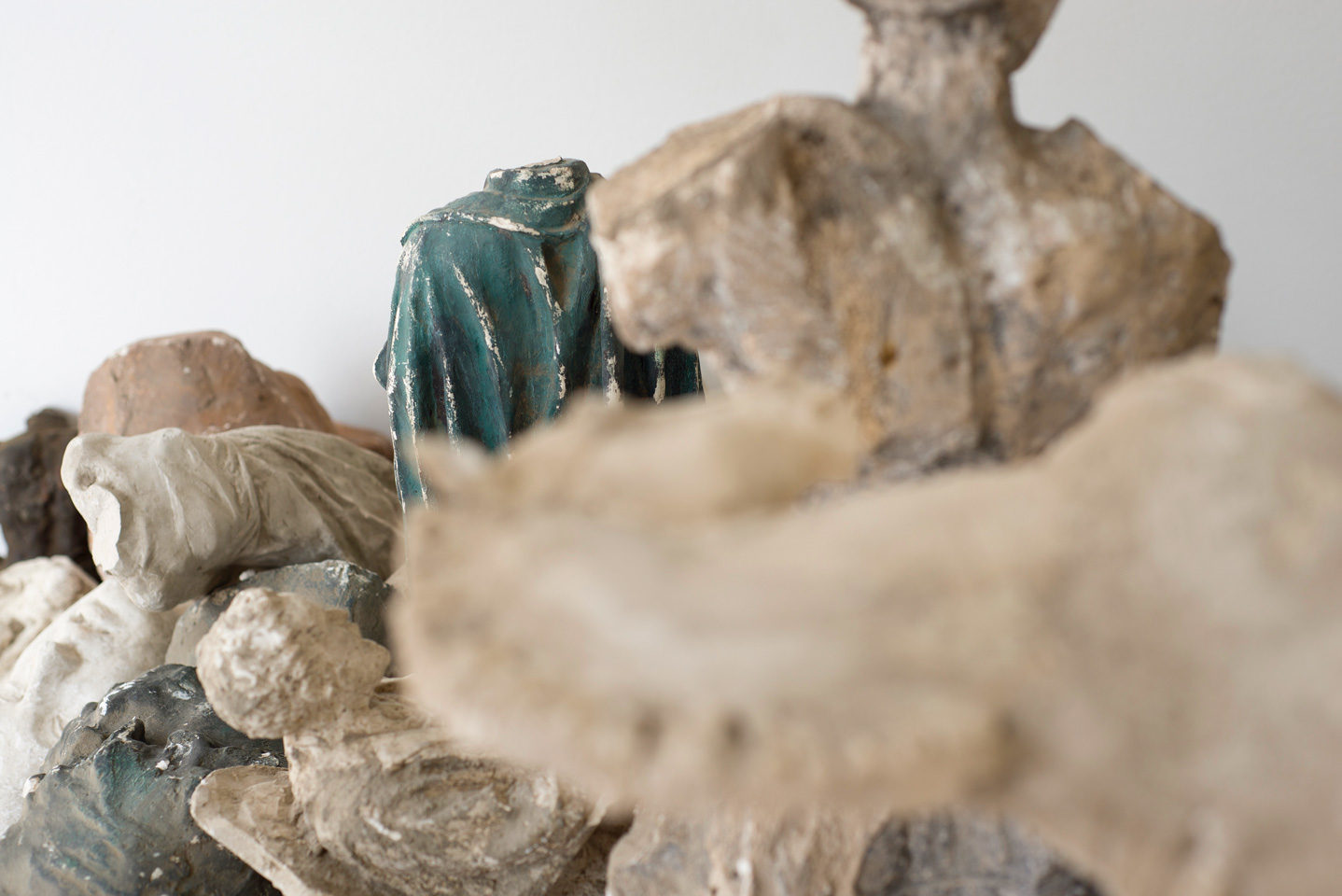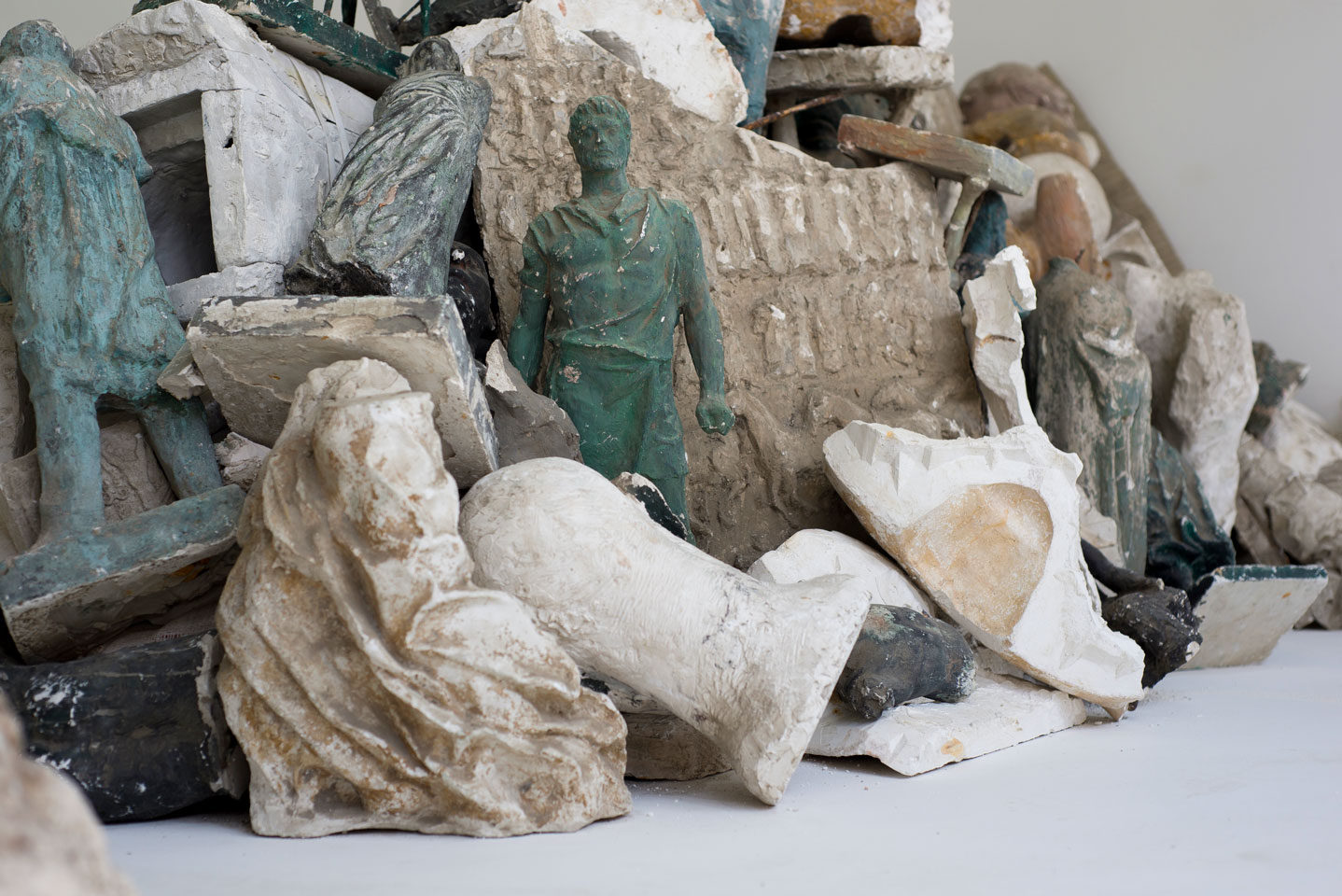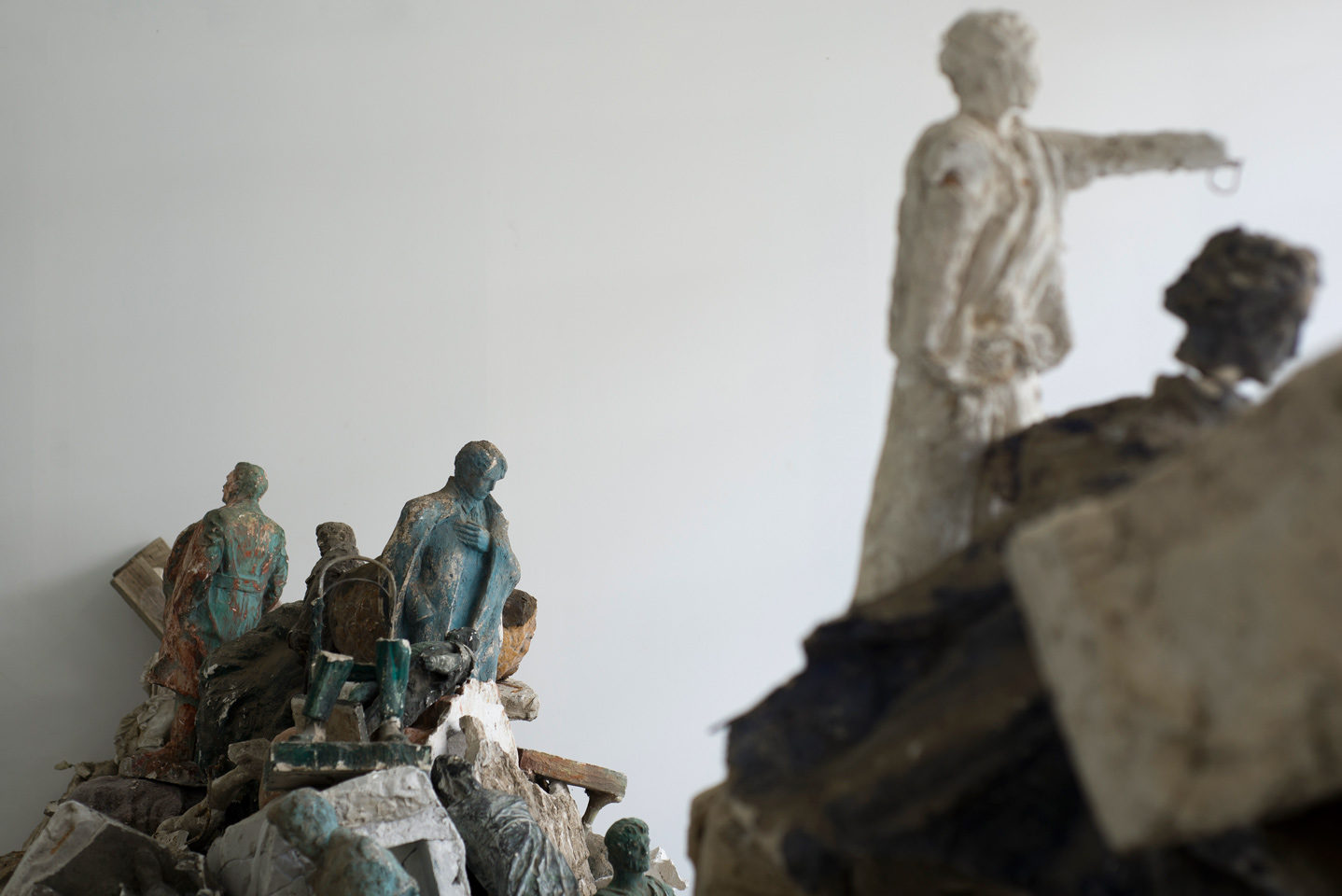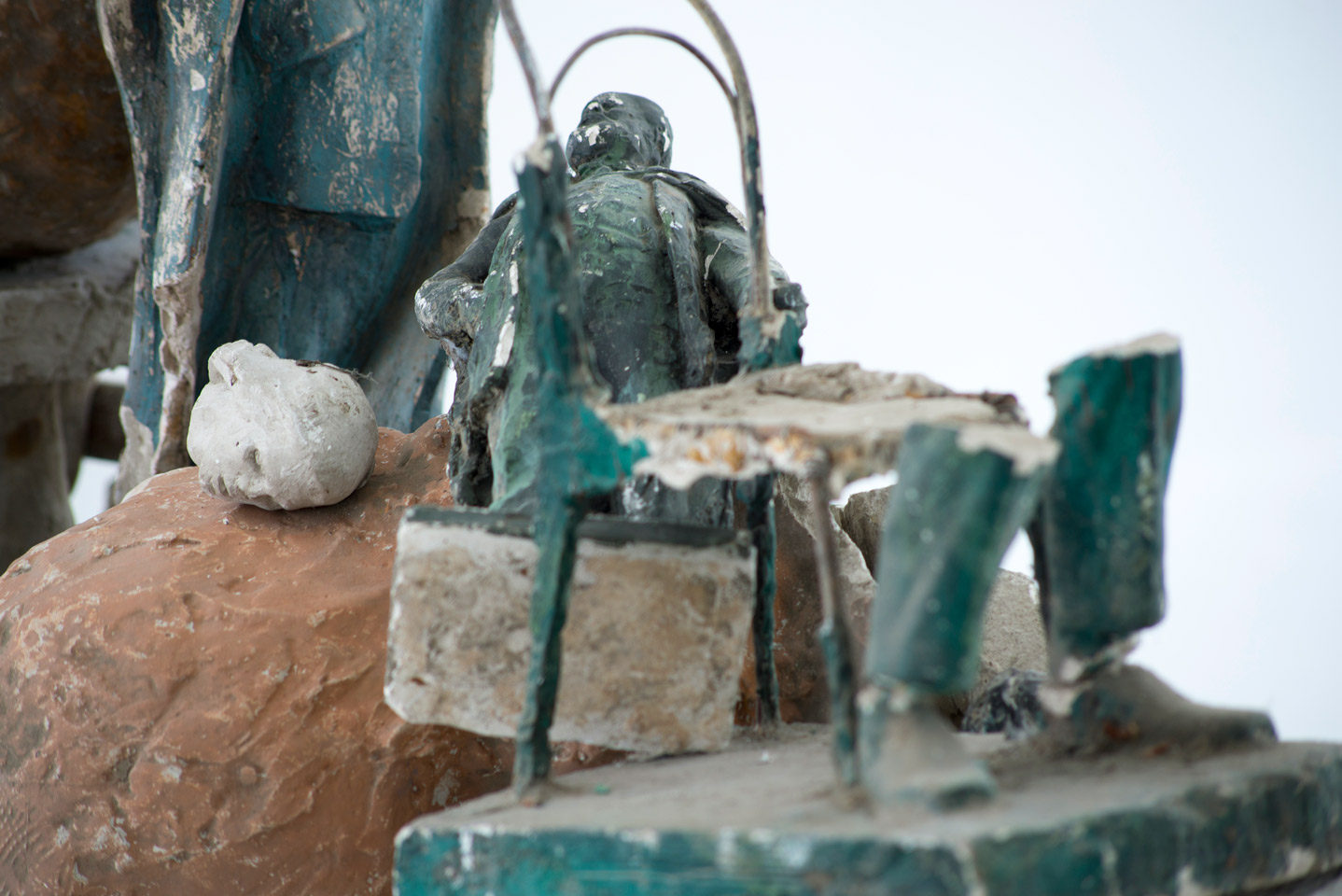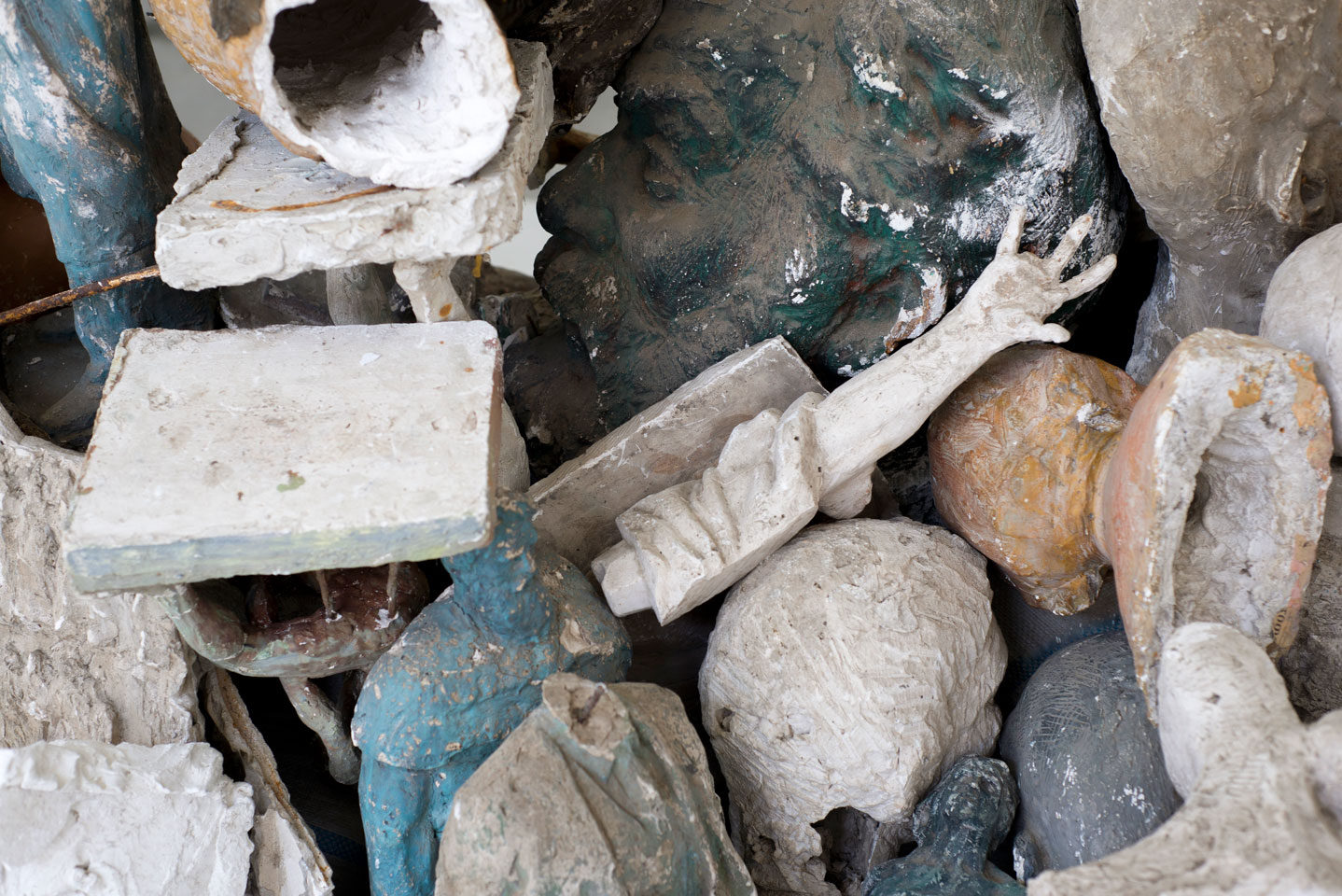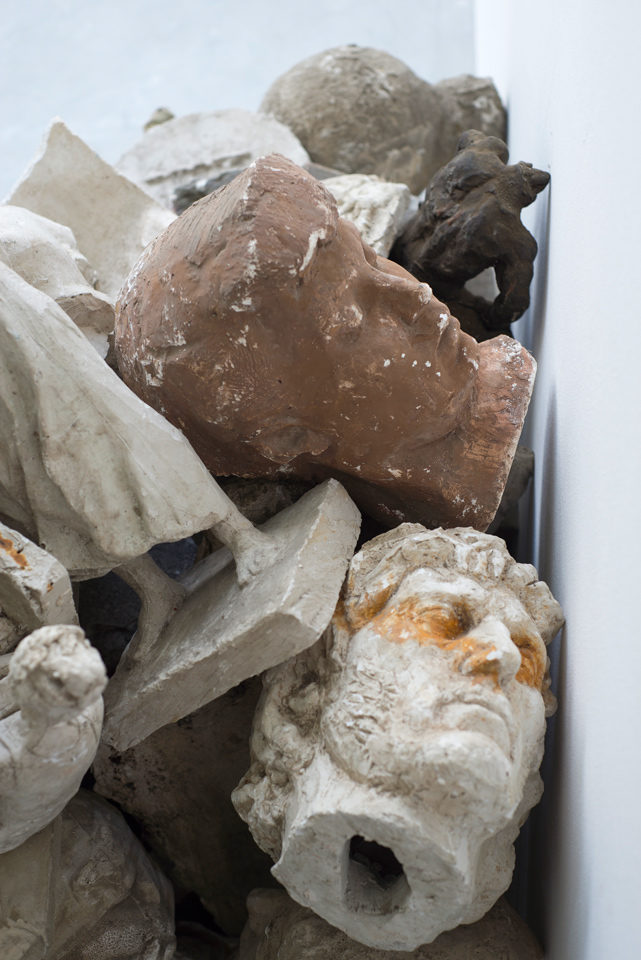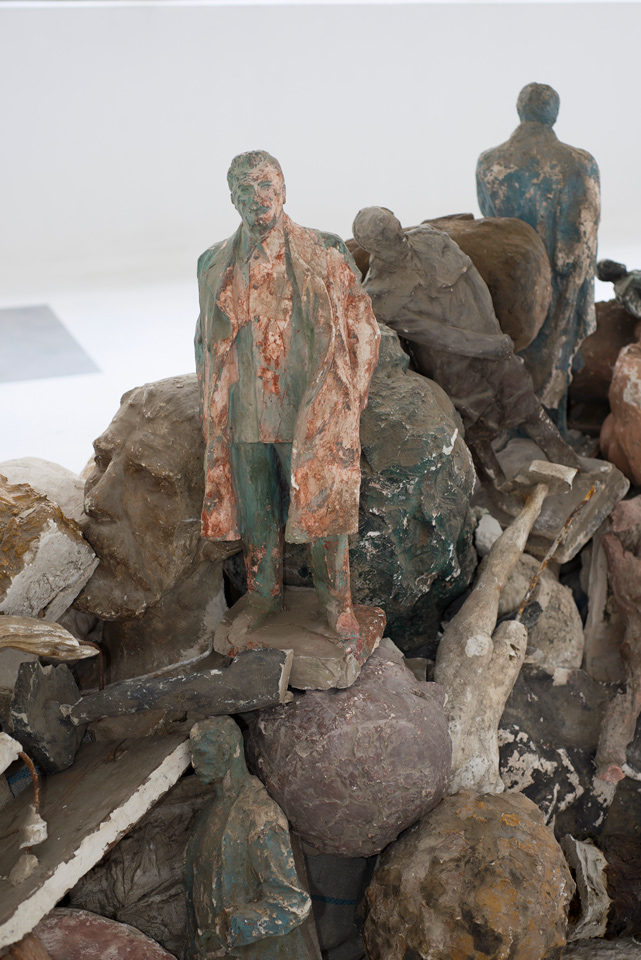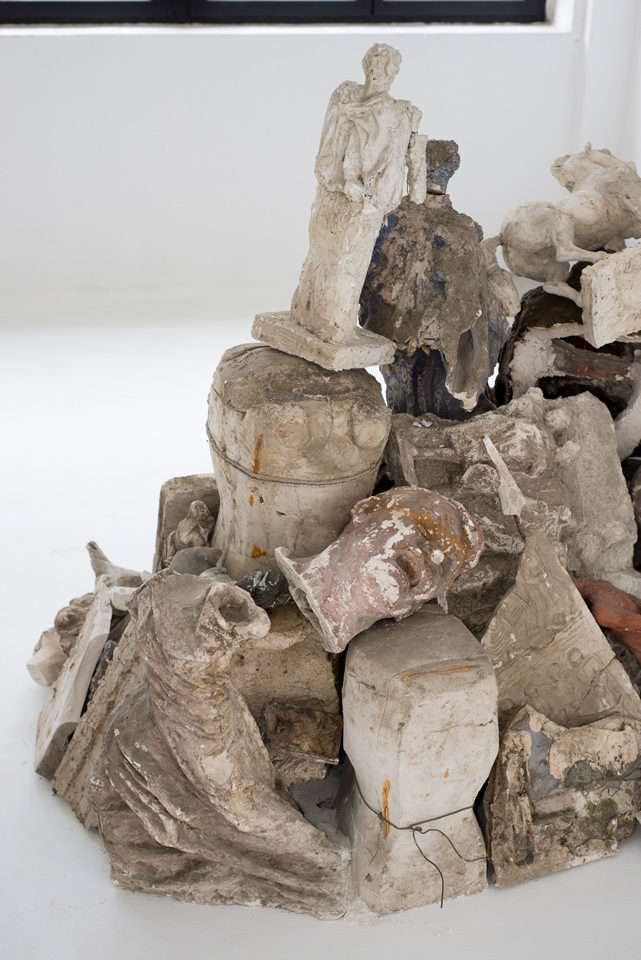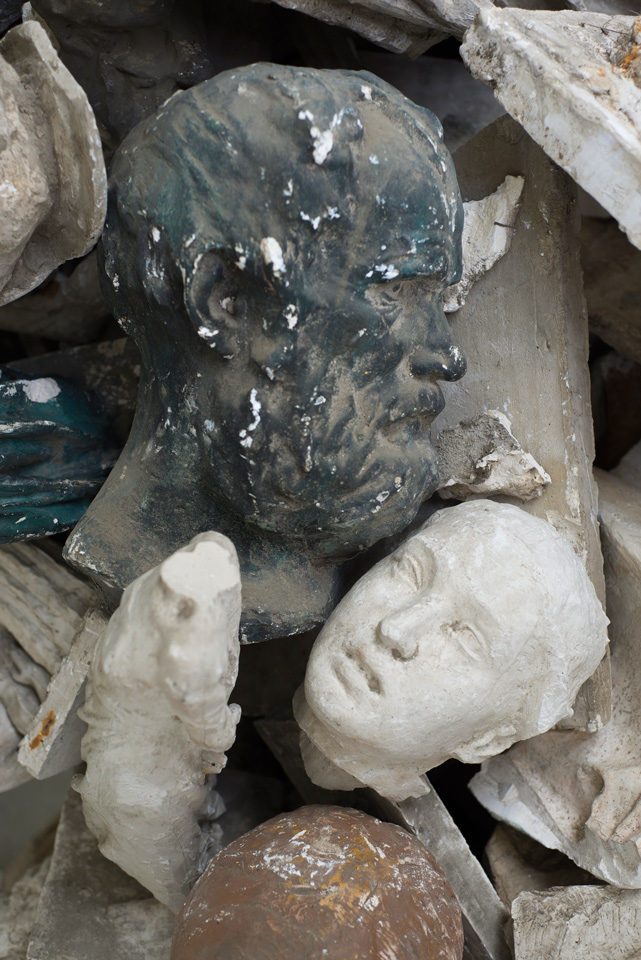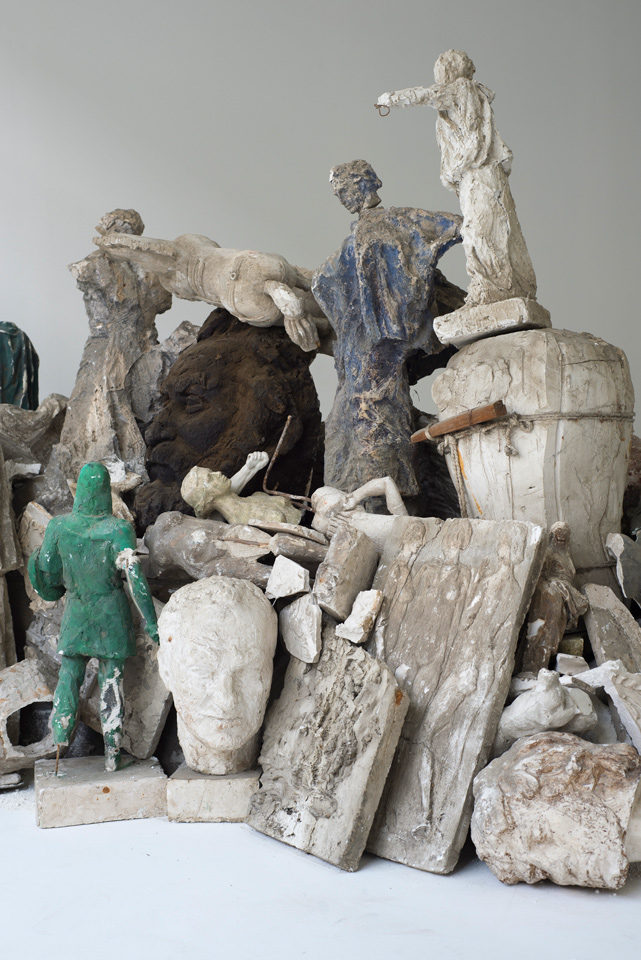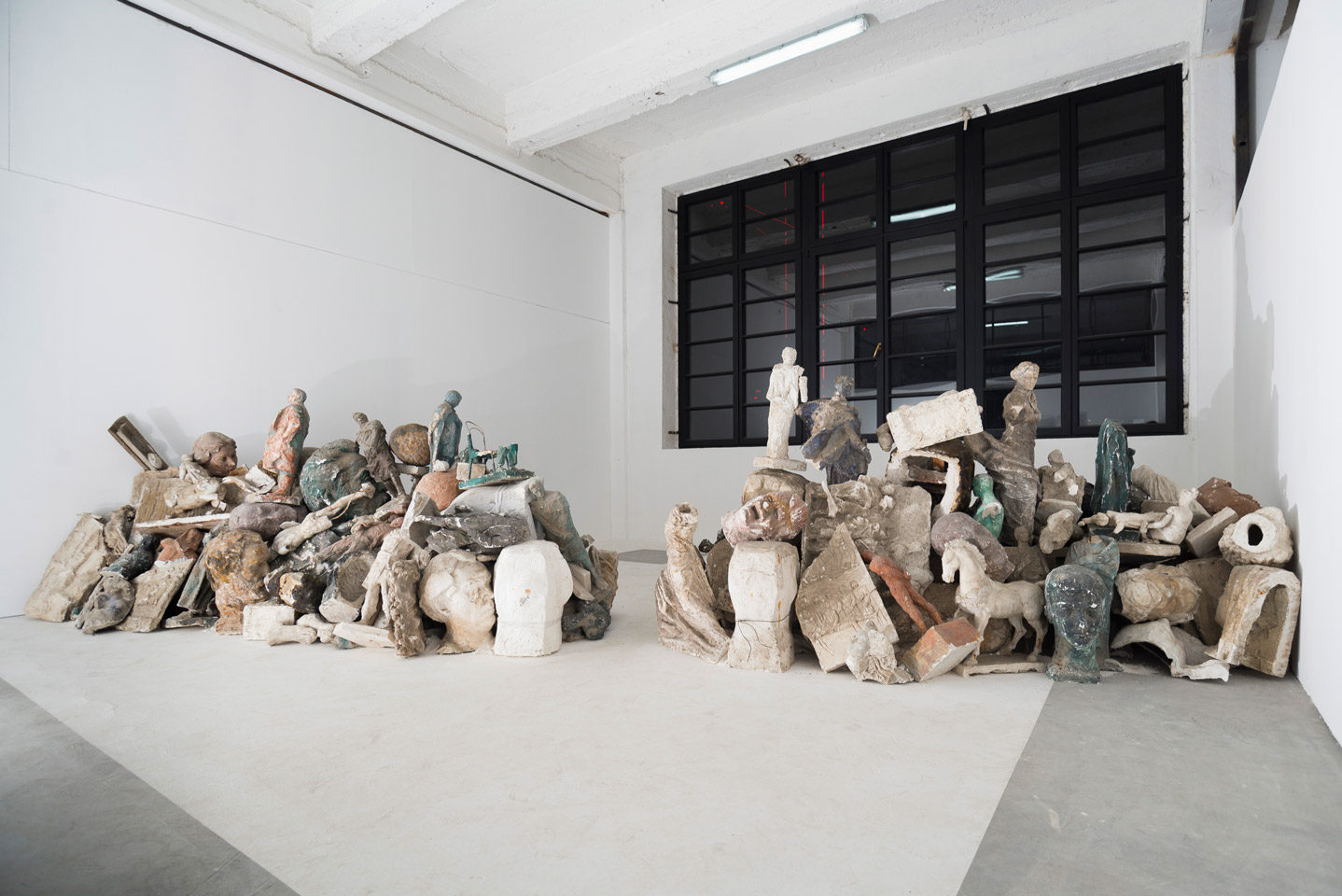100 Years After, 30 Years On
3rd Tbilisi Triennial
A studio archive of a prominent soviet sculptor Valentin Topuridze (1907-1980),
plaster models, moulds, fragments and traces, plaster, acrylic paint, 6m2, 2018.
Photos by Sandro Sulaberidze.
100 Years After, 30 Years On is an installation constructed from the archive of soviet sculptor Valentin Topuridze. It presents a nexus of models, moulds, fragments and traces. While the original sculptures were monumental, it is poignant how small and fragile the remaining artefacts appear. However, the moulds and the models can still be deployed and suggest that the archive has the potential to be activated in the service of the same ideology that Georgia was liberated from in 1989. One of the ideas this installation asks us to consider is how do we keep democracy safe in the times of apparent advance of populist and totalitarian leaderships.
In 2019 Georgia will be celebrating 30 years of independence from Soviet Union. This is also a year when all soviet propaganda sculptures were toppled in a symbolic gesture.
Ironically, this year, it will be 100 years since Lenin’s Plan of Monumental Propaganda ordained removal of monuments “erected in honour of tzars and their servants”. This edict saw the public vestiges of the old regime being replaced with monumental art which, propagated revolutionary and communist ideas. The most noted sculptors were selected for the task however one sculptor, Valentin Topuridze was responsible for producing most prominent soviet sculptures in Georgia from 1930s till 1980.
100 Years After, 30 Years On is reminiscent of the Russian revolutionary anarchist Mikhail Bakunin’s idealistic or naïve, and paradoxical idea of a barricade. In 1849 when Prussian troops tried to defeat the socialist insurgency in Dresden he suggested placing paintings from the National Museum’s collection in front of the barricades, speculating Prussian soldiers wouldn’t dare destroy the works and therefore pass the barricade. His plan was never enacted.
Topuridze’s precious archive of historic artefacts is arranged seemingly violently and carelessly with sculptures piled up face down, upside down and on top of each other. The paradox of fragility expressed by the crumbling materiality is contrasted with the strength and resistance of a barricade-like construction. The assemblage is porous and audience can move around the construction. The unorthodox positioning of this precious archive creates unexpected and profound relationships and interactions between individual sculptures through thought-provoking, evocative and dramatic compositions.
Some of the individual objects are detritus, have finished their life and allude to the fragility and impermanence of every political era and ideology. Following a long history of iconoclasm throughout the world, in response to Mikhail Bakunin’s barricade and expanding the notion of the fallen memorial parks, the assemblage seeks to re-materialise the erased visual history of this era and make it physical.
Topuridze family were my closest family friends and neighbours. I grew up playing with the artist’s granddaughter amongst his sculptures and witnessed the working space of his fallen career become a ruin. The original space is no longer but the remnants of his practice still exists and include moulds, casts, models and maquettes that can be understood as an archive of his life’s work and the values of the era. His minor works and non-communist sculptures still exist in the cities.
Reviews:
იდეოლოგიური ხელოვნების დრამა – ნინა სანაძის ინსტალაცია „სტამბაში“ – AT
